With volcanoes, waterfalls, and ancient temples, traveling around the Indonesian island of Java is an unforgettable adventure. We’ve rounded up the absolute best things to do in Java, plus we’re sharing insider tips and a perfect 1-week Java itinerary so all the planning is done for you!
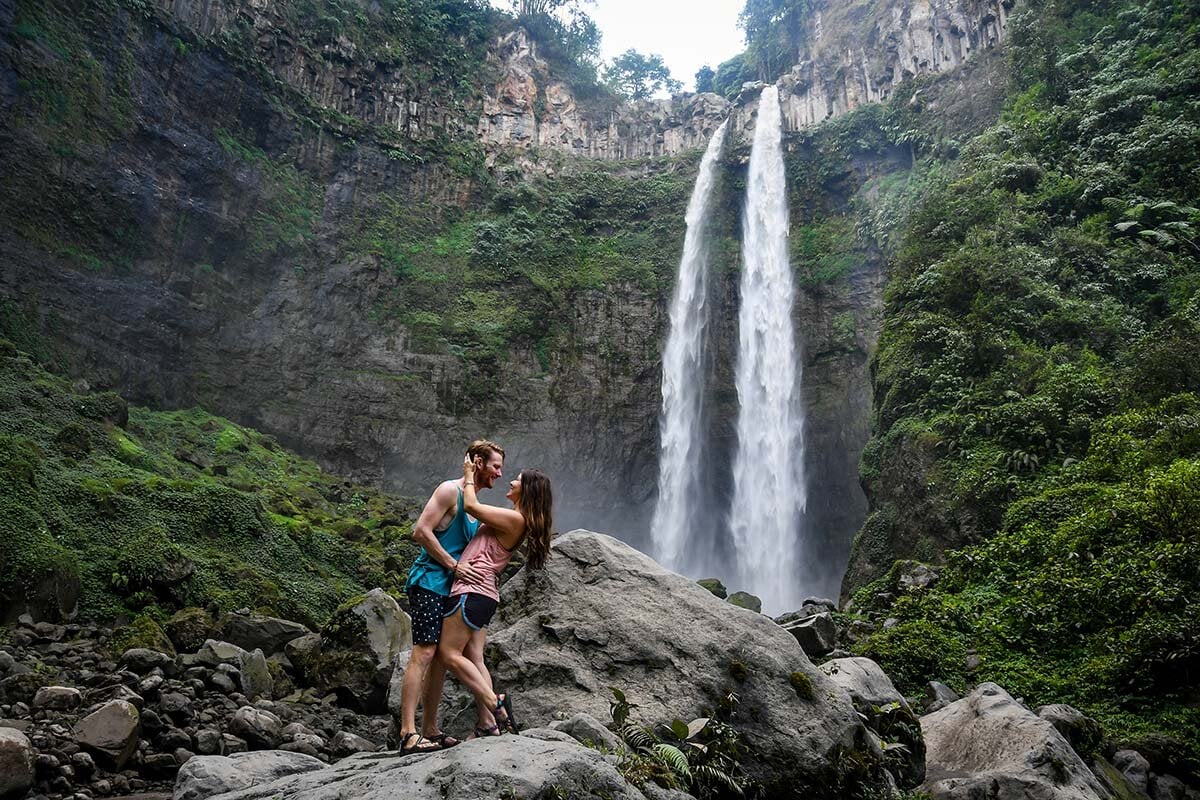
When most travelers think of Indonesia, it’s Bali that comes to mind. It’s no secret that we love Bali. With its abundance of smoothie bowls, cheap massages and a vibrant culture, it is certainly worth a spot on your Indonesia trip.
However, in a country consisting of more than 17,500 islands – each with its own unique draws – there is much, much more to this nation than just Bali.
If you’re looking to escape the polished hipster vibes and touristy beaches sprinkled with Westerners sipping Bintang, we’ve got a place in mind for you…
Dotted with volcanoes, waterfalls and dense jungles, traveling around the island of Java, Indonesia is an adventure in itself. Mingle with locals without being just another tourist, and swap smoothie bowls for authentic street food.
There are so many things to do in Java, foods to try, and cultural experiences to be had. But truthfully, it can be a bit daunting planning your trip to Java because there is less tourist infrastructure and far less information about it online.
That’s where we come in… [Enter your personal Java trip planners… aka us!]
This article is not only going over the best things to do in Java, but also what to expect, how to get there, where to stay, how to plan your itinerary, and (most importantly!) which foods to try.
Java Indonesia Travel Guide
As we said, this is a full on travel guide packed with much more than just things to do. We’re covering all the bases and answering all the questions spinning around in your mind (been there!). So use the links below to jump around this article so you can plan an incredible trip to Java!
- Java overview
- Best things to do in Java
- How to book tours in Java
- How to get to Java
- Java 1-Week Itinerary
- Transportation around Java
- What to Pack for a trip to Java
-
(Hint: it’s very different from what we’d recommend packing for Bali!)
-
Java Indonesia overview
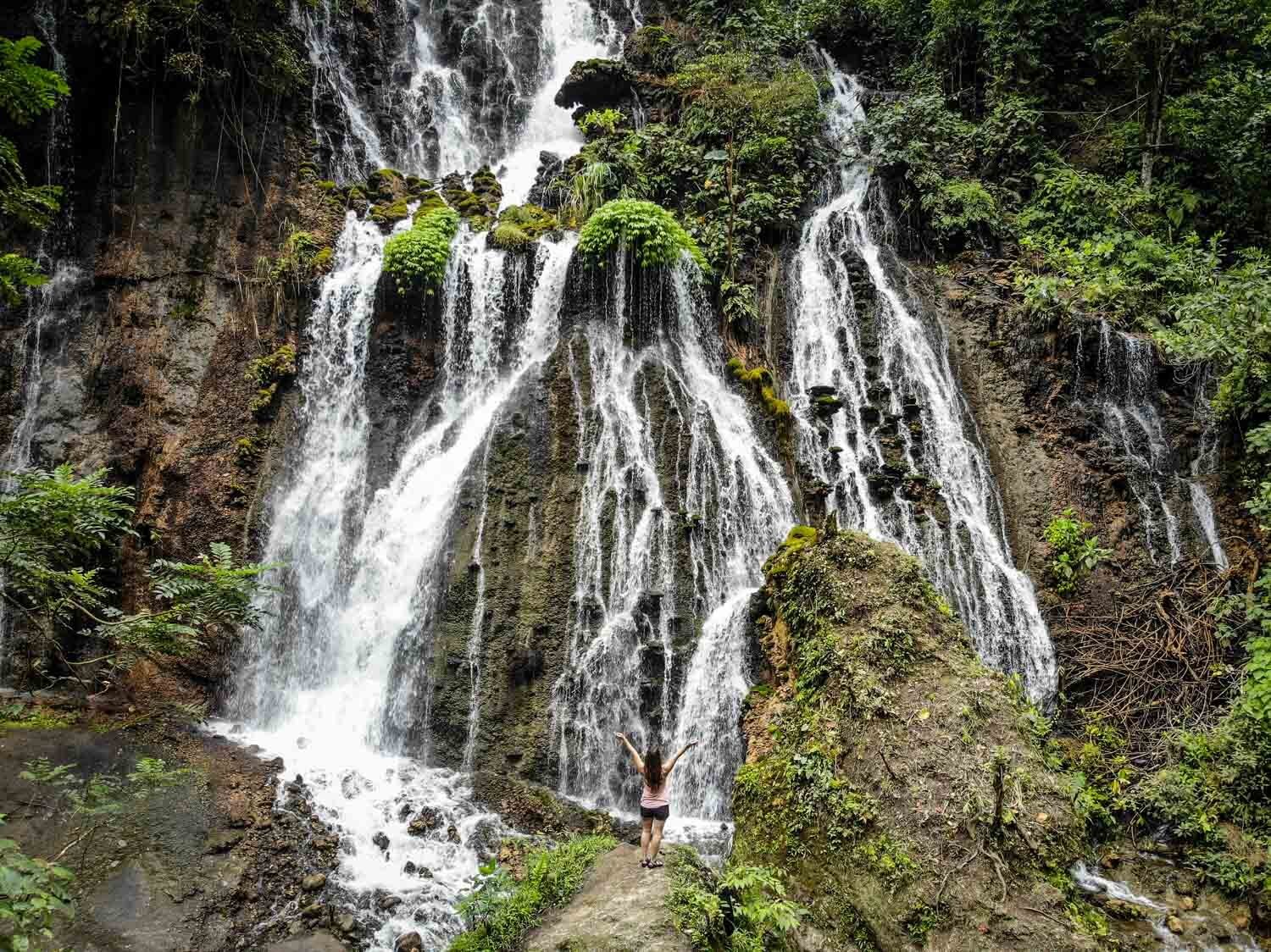
Java is a huge island that would take months to explore properly. But if you, like us, are limited in time and want a mix of culture, nature and adventure, the best region to focus your travels on is East Java.
For the purpose of this article, we’re going to focus solely on the region of East Java. Additionally, we’re narrowing it down to locations that you can realistically visit in one week in Java.
What to expect in Java:
-
Transportation between cities can be long and uncomfortable
-
Even if cities don’t look that far apart on a map, travel between them to take longer than you expect. Seriously. (don’t trust the timings on Google Maps)
-
Outside of Yogyakarta, the hotels and restaurants you’ll find around Java tend to be quite basic
-
Lots of early mornings! (Many of the places to see in East Java require you to wake up before the sunrise.)
-
Little nightlife. Java is a Muslim majority island (like most of Indonesia), and therefore you won’t find nearly as much nightlife (or alcohol, for that matter) as you will on the Hindu island of Bali.
-
Locals often want to get photographs with Westerners, since tourists are less of a norm.
Java vs. Bali:
-
Far cheaper than Bali
-
Much less crowded than Bali
-
Less tourist infrastructure
-
English is not as widely spoken as on the island of Bali
What types of travelers will enjoy Java

Java is a destination that some travelers will love, while others may not be so keen.
You’ll love Java if…
…you consider yourself an adventurous, experienced traveler or someone who wants to escape crowds and touristy spots, East Java will be your jam!
Java might not be for you if…
…you prefer to be pampered and aren’t about roughing it in any way, shape or form, Java may not be your cup of Joe (see what I did there?).
Best things to do in Java
If you’re still reading, we’ll assume you’re one of those travelers who will enjoy Java Indonesia and will enjoy the unique and adventurous travel experience you’ll find on this island.
We’re here to narrow down the best things to do in East Java and provide you with all the info you need to plan your trip.
These 9 things to do in Java should be “musts” on your list (they are the best of the best!). They are also in a perfect order for traveling east from Yogyakarta to Bali and can all be fit into a one-week trip.
So let’s dive in!
Note: The order in which these activities are listed is actually a really good travel route. At the bottom of this article, we’re sharing a sample Java itinerary to further help you plan your trip!
1. Experience culture in Yogyakarta
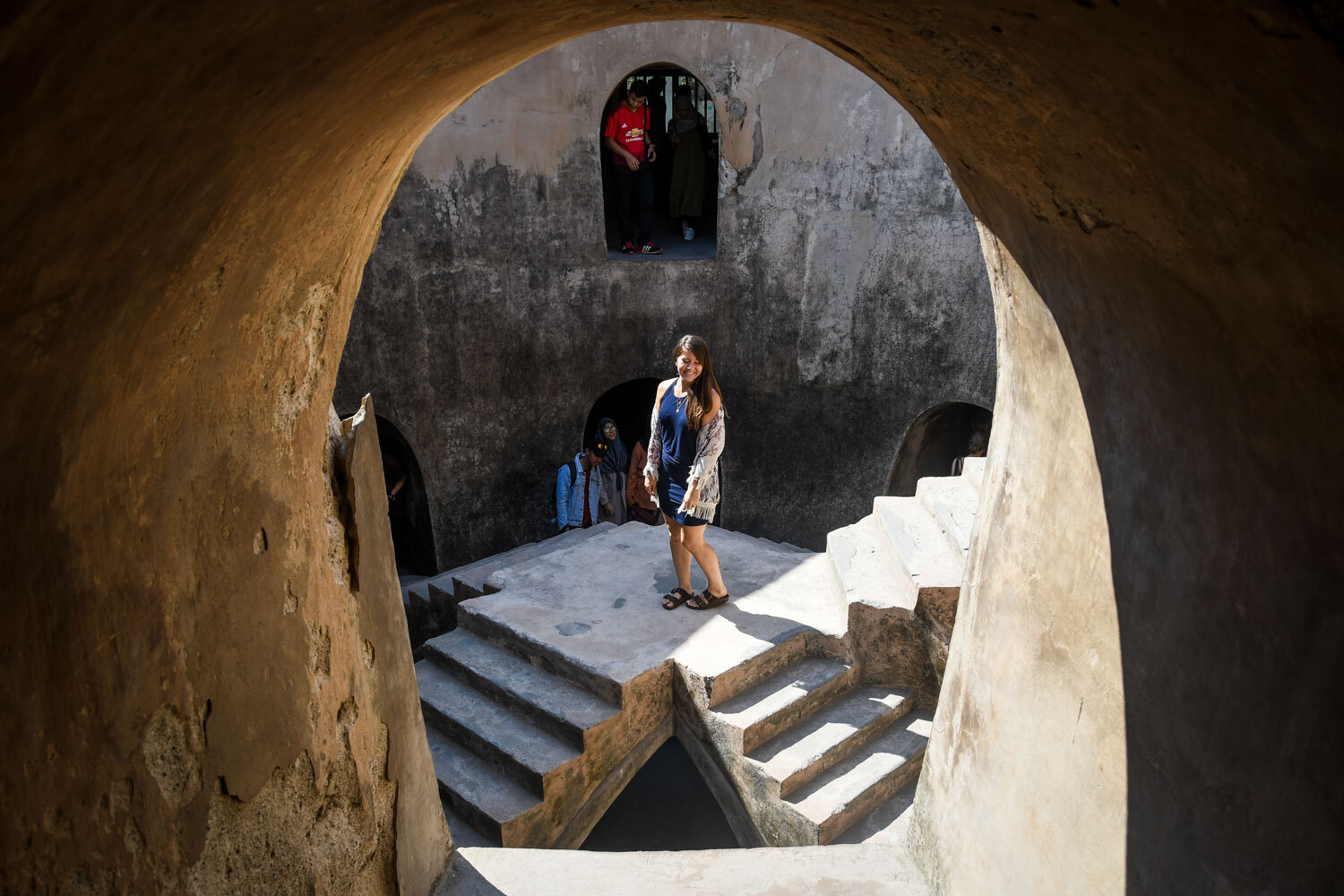
Known as the “cultural center” of Java, Yogyakarta is a city that has an undeniable magnetic charm.
Yogyakarta is the foodie destination on Indonesia’s most populated island. In addition to being a culinary hotspot, Yogyakarta has a thriving art scene, cute cafes and bars, strong religious roots, and some of Indonesia’s most iconic temples.
But first things first: Let’s make sure you know how to pronounce the name of this city. It’s easy to get it wrong, and it is embarrassing when the locals correct your mispronunciation. I speak from experience!
Let’s say it together: JOHG-ja-kart-ah
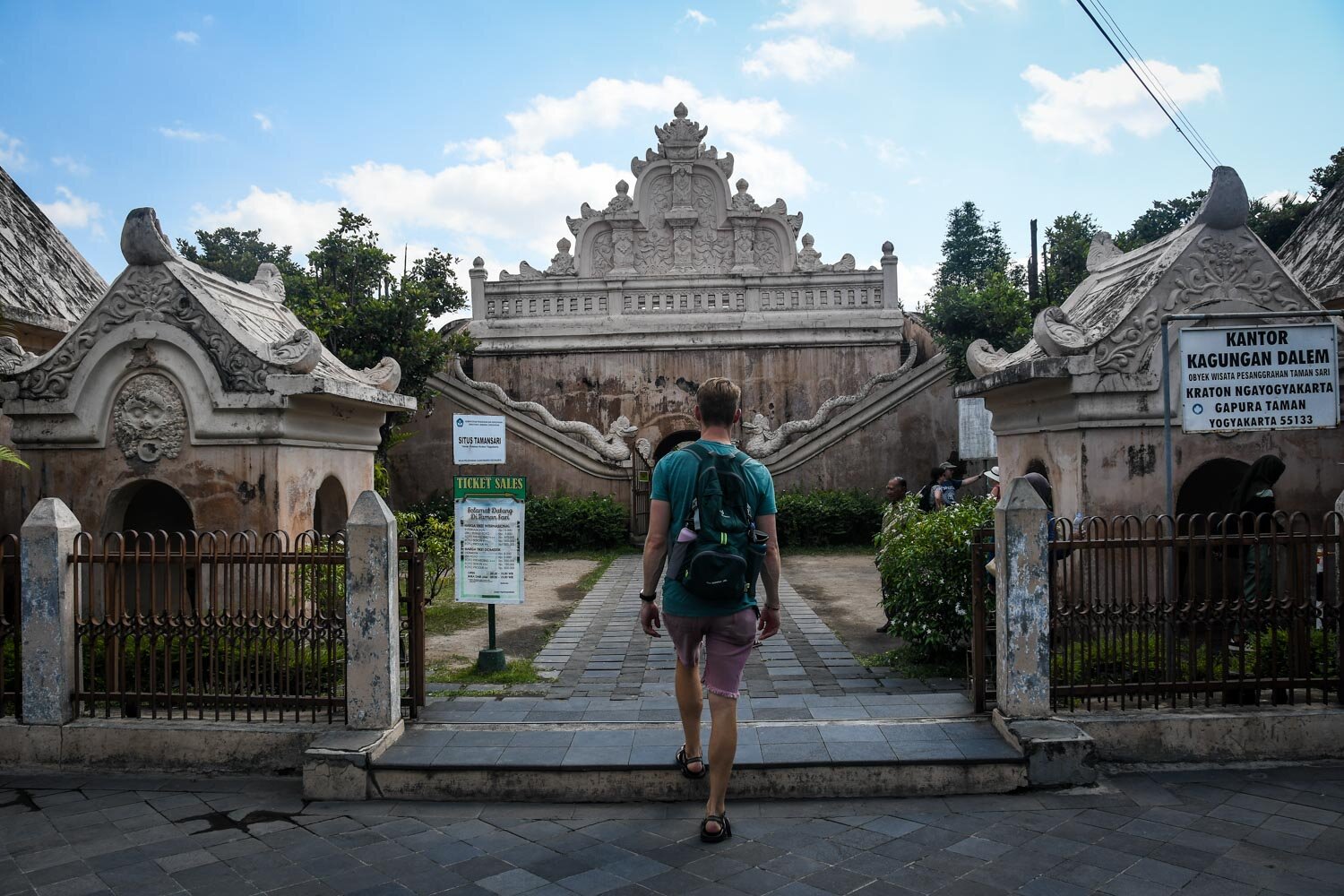
There are so many things to do in Yogyakarta that we wrote an entire article about how to spend your time there. But here are a few “must do’s”:
-
check out the street art
-
eat your way through this foodie city
-
people watch on Malioboro Street once the sun sets
-
shop for batik fabric (this is the place to get it!)
Oh, and while you’re in “Jogja” (that’s what the locals call it), you can’t miss the two most famous draws of this Indonesian city. The next two points describe each of them in detail…
2. Catch the morning light at Borobudur Temple
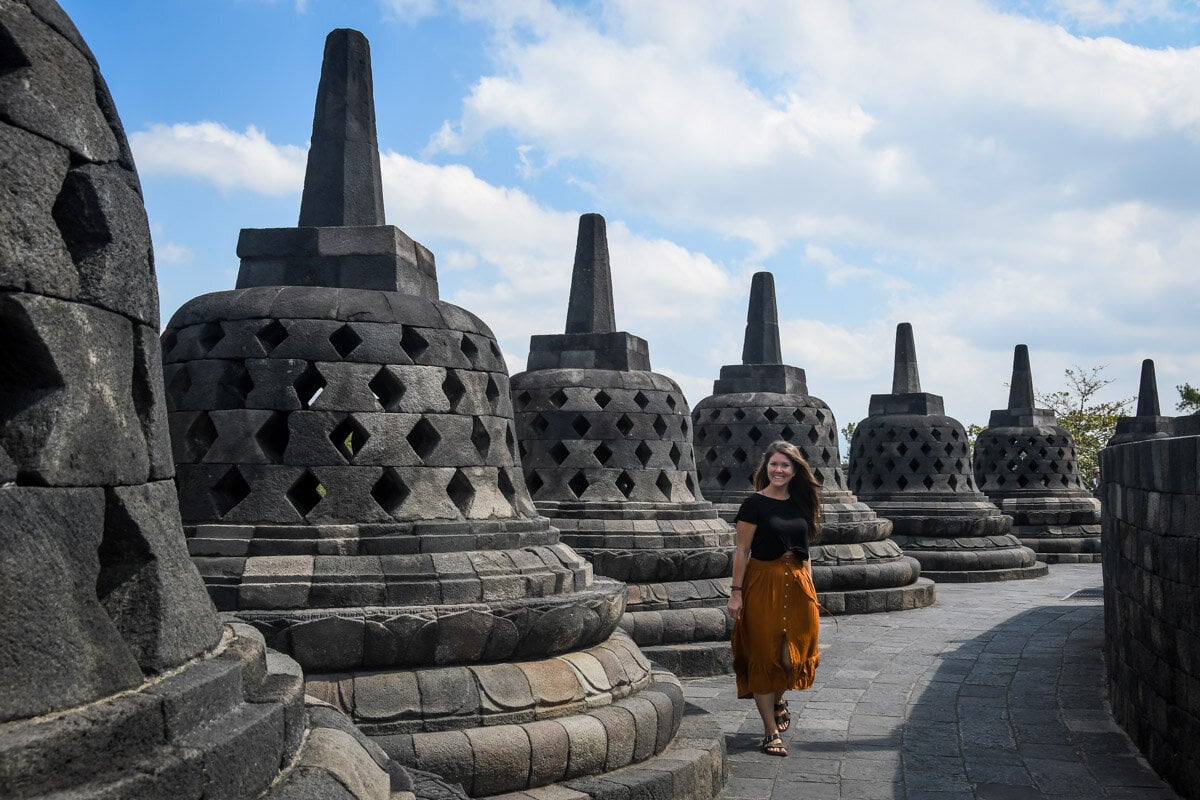
There’s a good chance that you’ve seen pictures of Borobudur Temple, even if you didn’t know it. This beauty is an Instagram favorite, and for good reason. It is a spectacular sight to behold.
One of our very favorite parts about traveling is finally stepping foot somewhere we’ve been dreaming and planning about for years. And at Borobudur, I had one of those moments where I had to pause and let it sink in that I was really there.
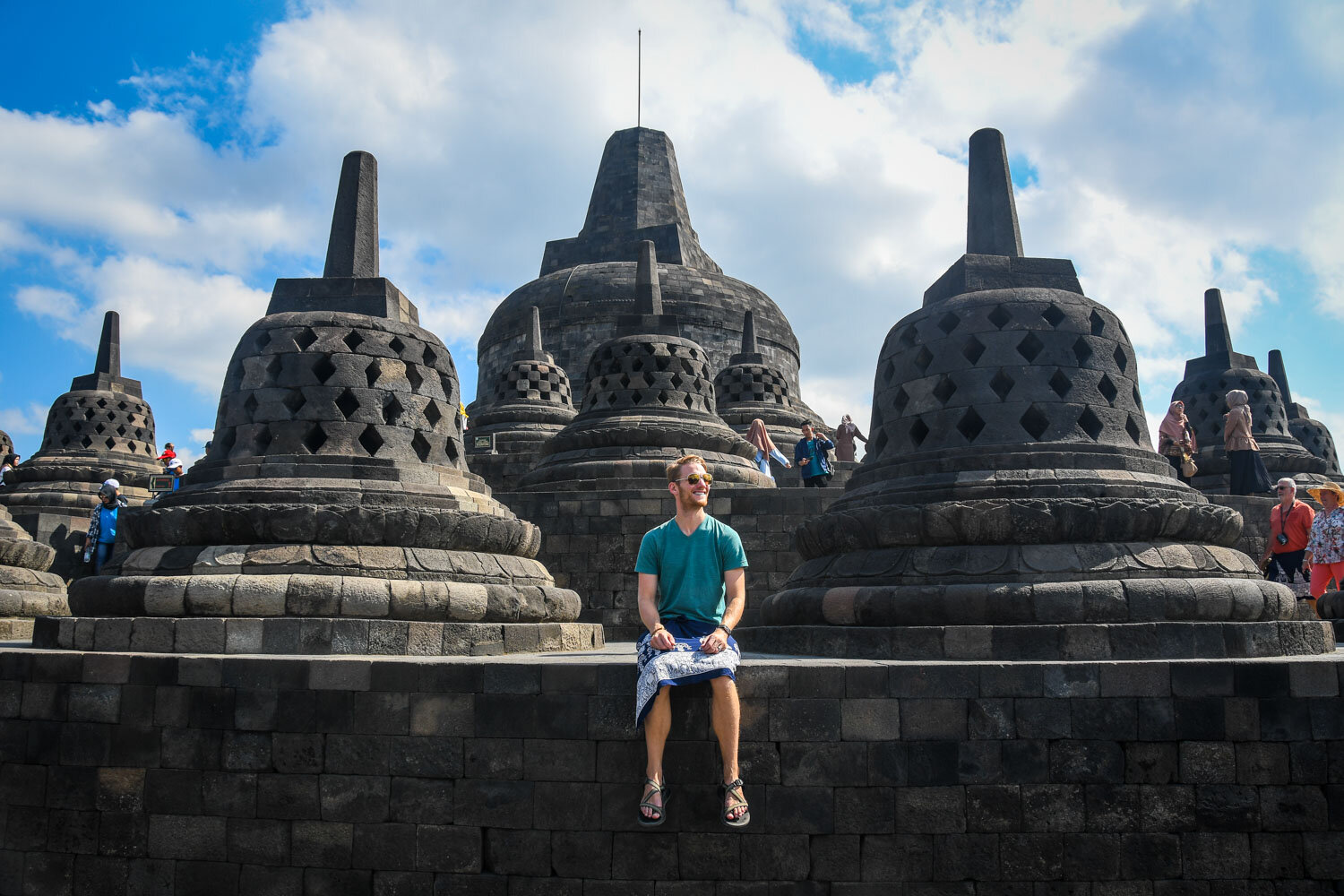
While the island of Java is predominantly Muslim, this Buddhist Temple one of the most-visited attractions in Indonesia, and is a “must” for most travelers.
Wander past the bell-shaped pagodas on the top level of the temple, each of which has a Buddha statue inside. And as the morning light casts a glow over the misty fields that lie before you, you’ll understand why this place gets so much hype.
Lucky for you, we’ve put together a guide to visiting Borobudur Temple, including what to wear, how to get there, and how to save money on your entrance ticket!
3. Sunset at Prambanan
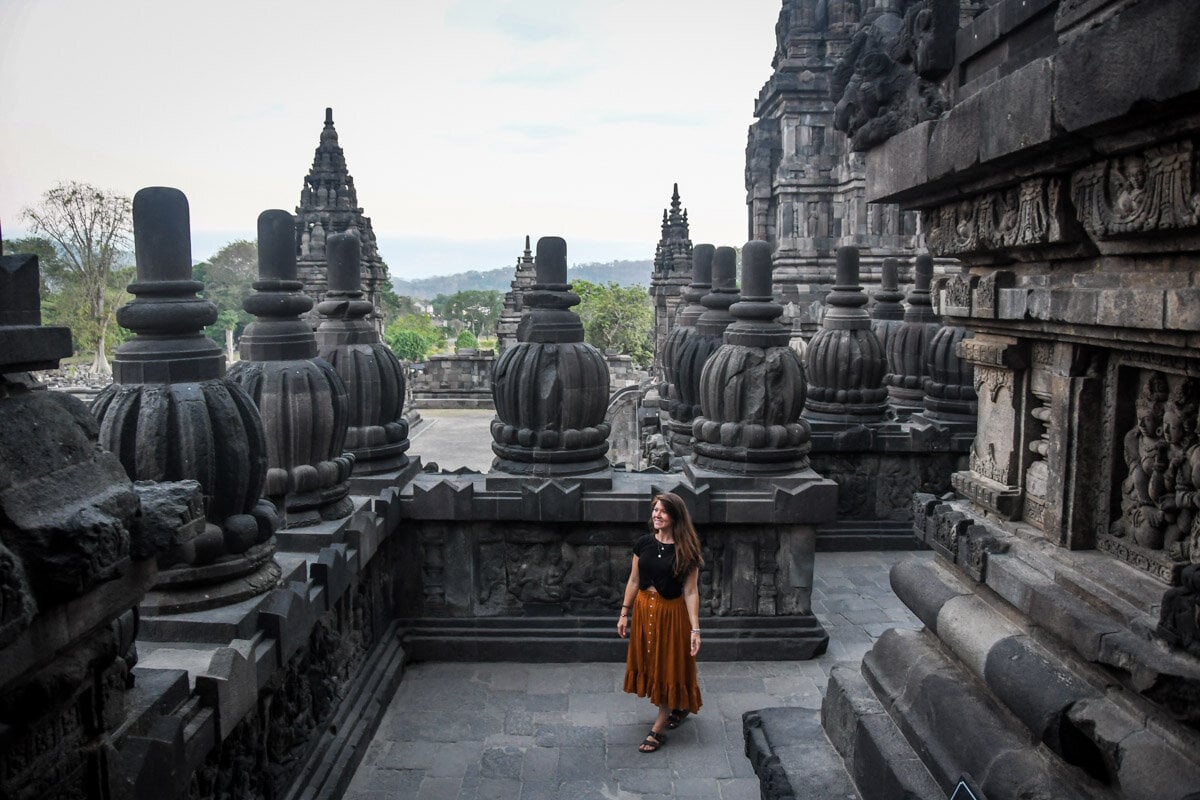
While this temple is certainly less famous than Borobudur, it is still incredibly impressive.
Often compared to Cambodia’s iconic Angkor Wat, this Hindu temple complex bears a striking resemblance to its more well-known doppelgänger.
Explore this complex, taking in all the details, like the hand-carved reliefs that depict Hindu legends, and imagine you’ve stepped back in time as the golden hour glow envelopes the temple grounds.
Psst! We have a guide devoted to everything you need to know about visiting Prambanan Temple.
4. Go on a food tour with a local
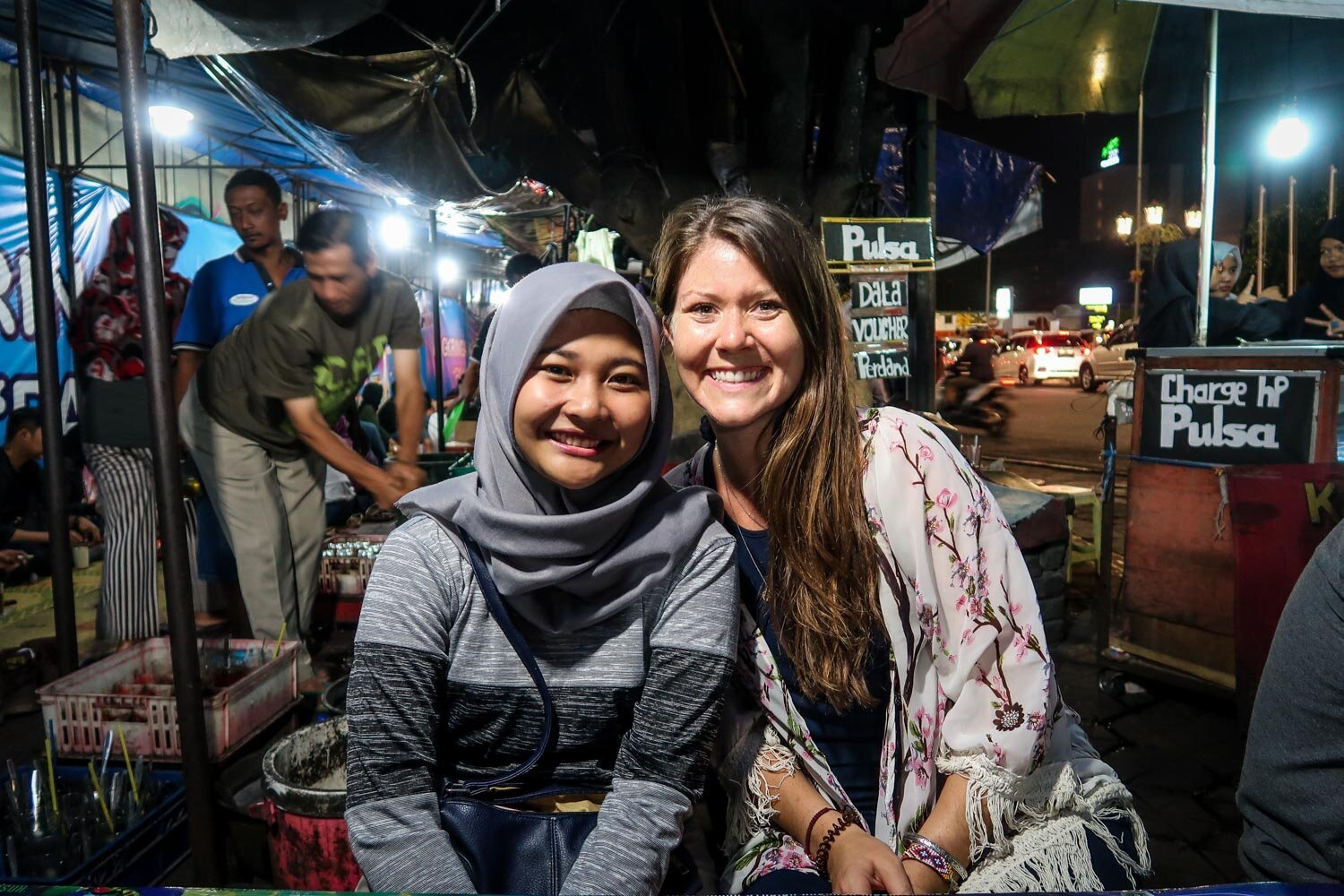
We’re obsessed with food (maybe a little too much?), and we’ve found the best way to sample as much of the local cuisine as possible is by going on a food tour.
Yogyakarta is known as a “foodie city” and there are so many foods to try that you’ve likely never heard of like bakmi and gudeg.
Quite honestly, it would be kind of tricky to navigate the cuisine without the help of a local, so we would highly recommend booking a tour with Backstreet Academy.
5. Go underground in Jomblang Cave

If you’re feeling adventurous, here’s your chance! Not far outside the city center is a cave that hold a magical secret…
Each day for a short period of time, a light streams into the dark cavern from a hole in the cave’s “ceiling”. This creates a glowing beam of light that seems almost unreal.
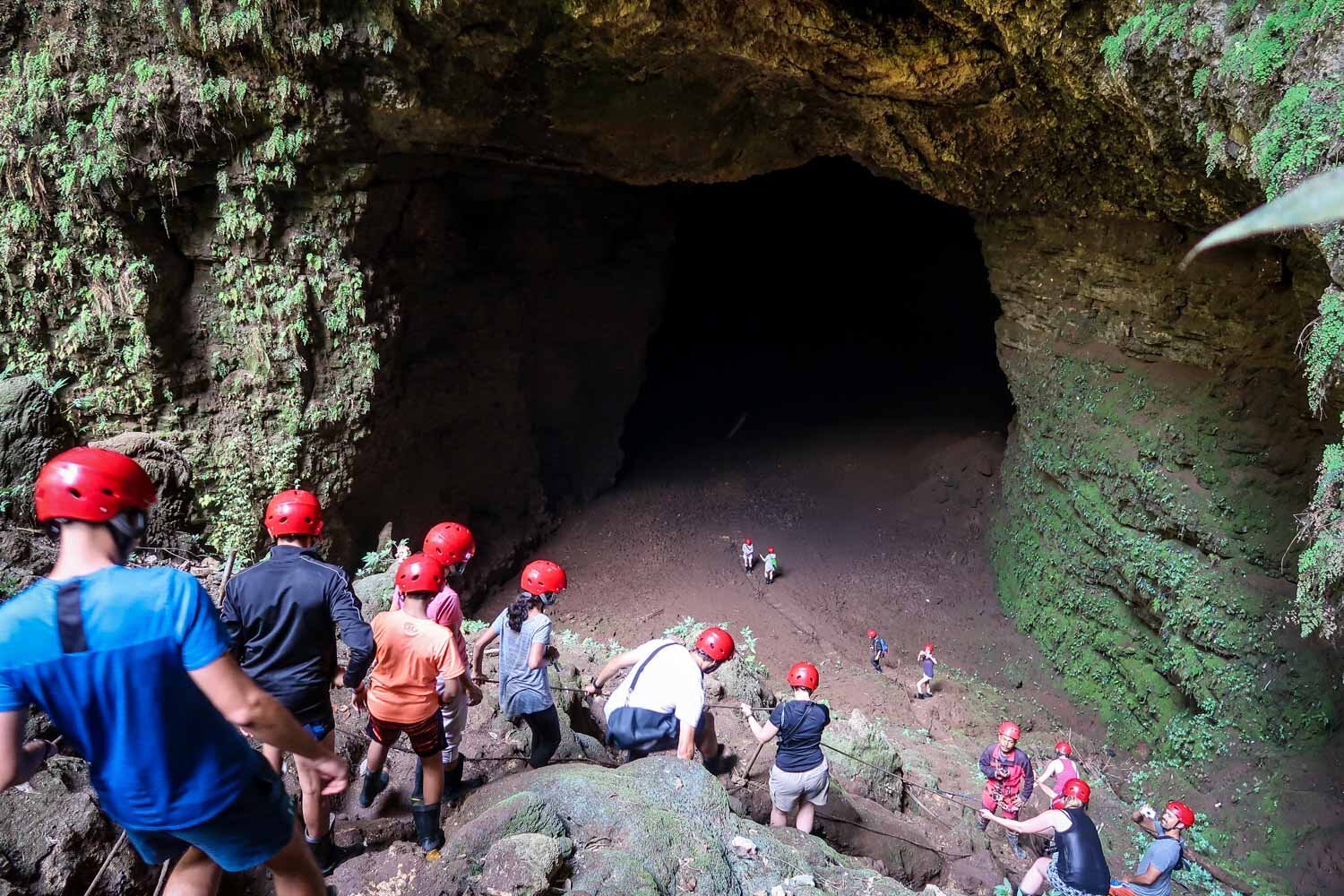
This whole caving experience is quite the adventure, as you’ll be lowered into the cavern by a team of 30 local men and boys holding your rope, and you’ll then explore the cave through knee-deep mud. Channel your inner Indiana Jones (we’ve all got one!), and prepare for a wild experience.
Are you intrigued? Read more about how to book a Jomblang Cave tour and what to expect in our Yogyakarta guide. (It’s #5 on the list.)
6. Feel tiny at Tumpak Sewu Waterfalls
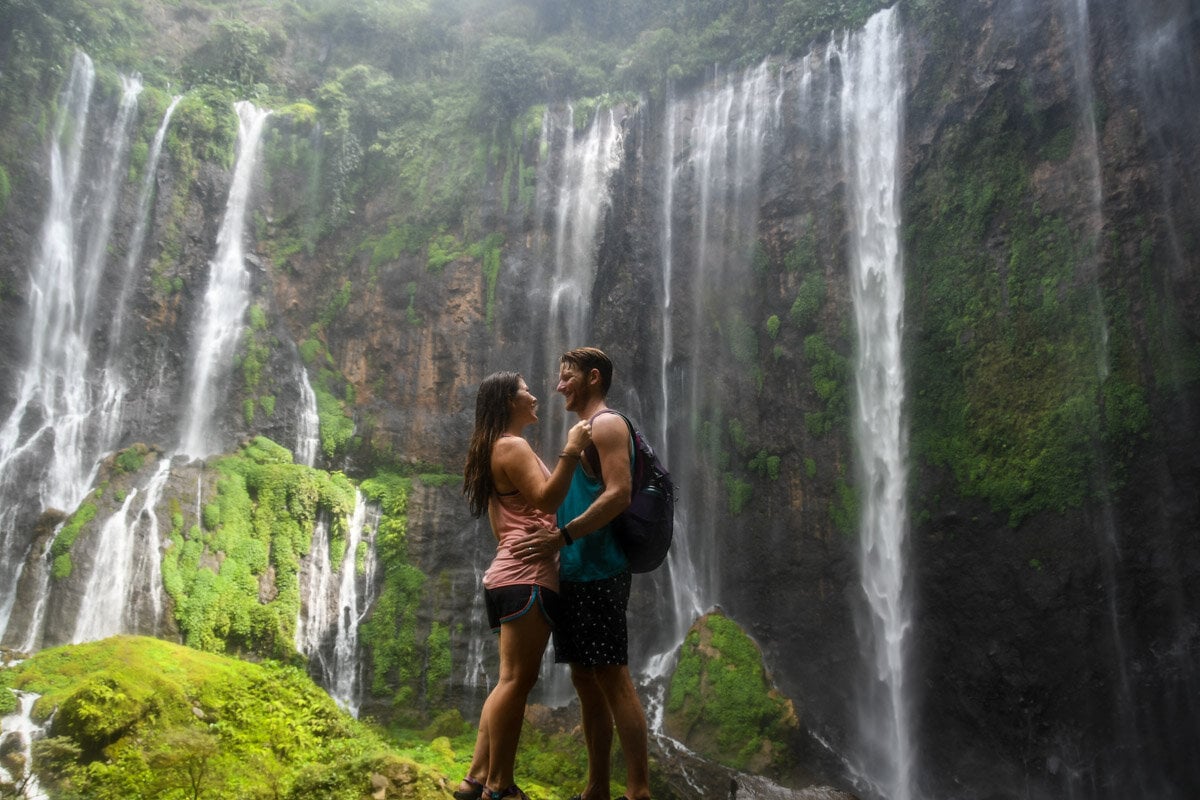
If you have a thing for waterfalls a) we’d make great friends because we’re also obsessed and b) you NEED to put Tumpak Sewu Waterfall on your Java itinerary. It is absolutely mind blowing.
We’ve seen a lot of waterfalls on our travels, and this onedefinitely stands out as one of our favorites. This U-shaped waterfall is massive and is one of those rare places where you can’t quite believe your eyes.
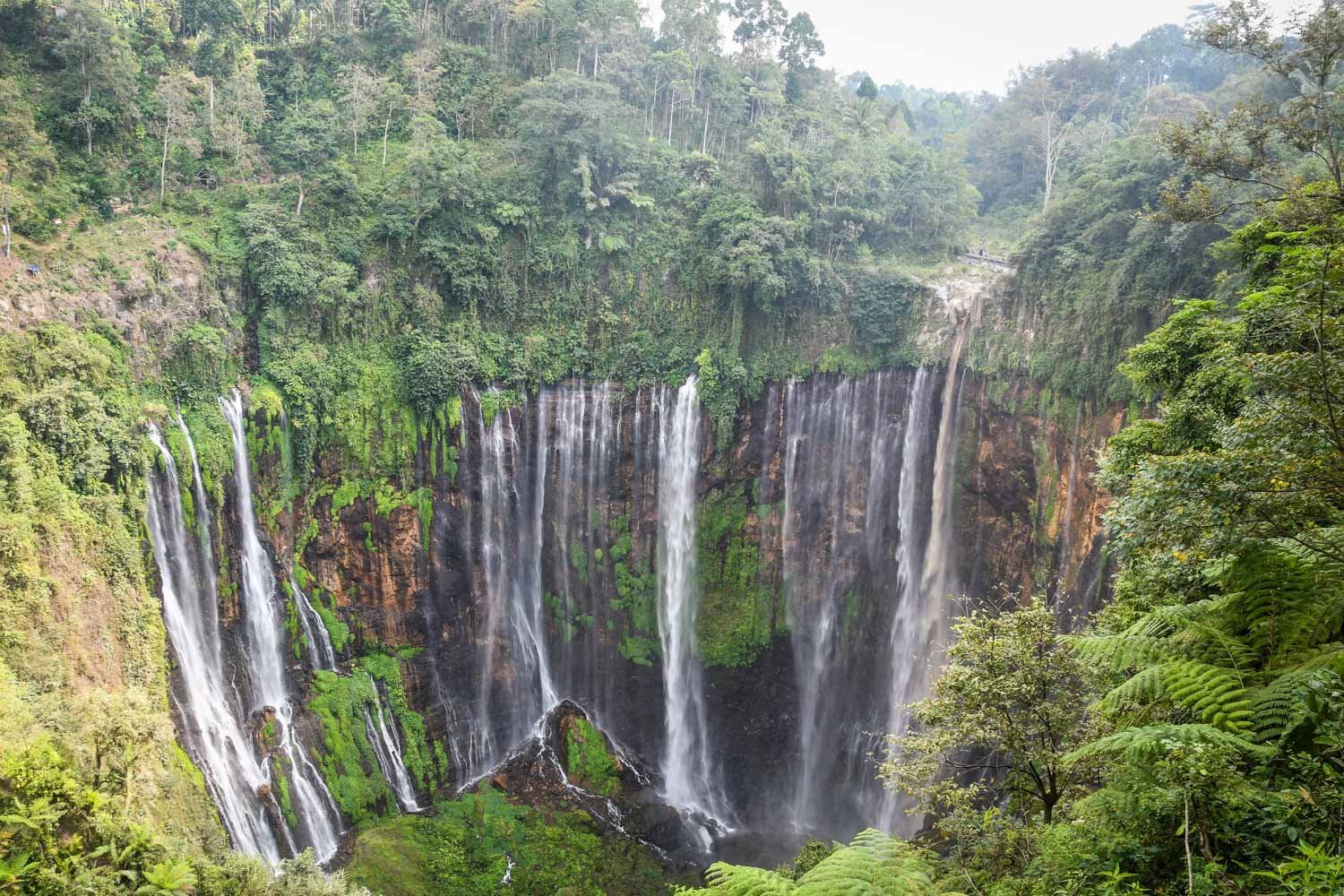
But before you hop in a car headed for Tumpak Sewu, a word of warning. Getting to this waterfall requires a bit of work and an adventurous attitude.
Read More: Lucky for you, we’ve got all the details of how to get to Tumpak Sewu as well as what to expect so you don’t have to do the confusing guess work like we did!
7. Wander through Malang’s “Rainbow Village”
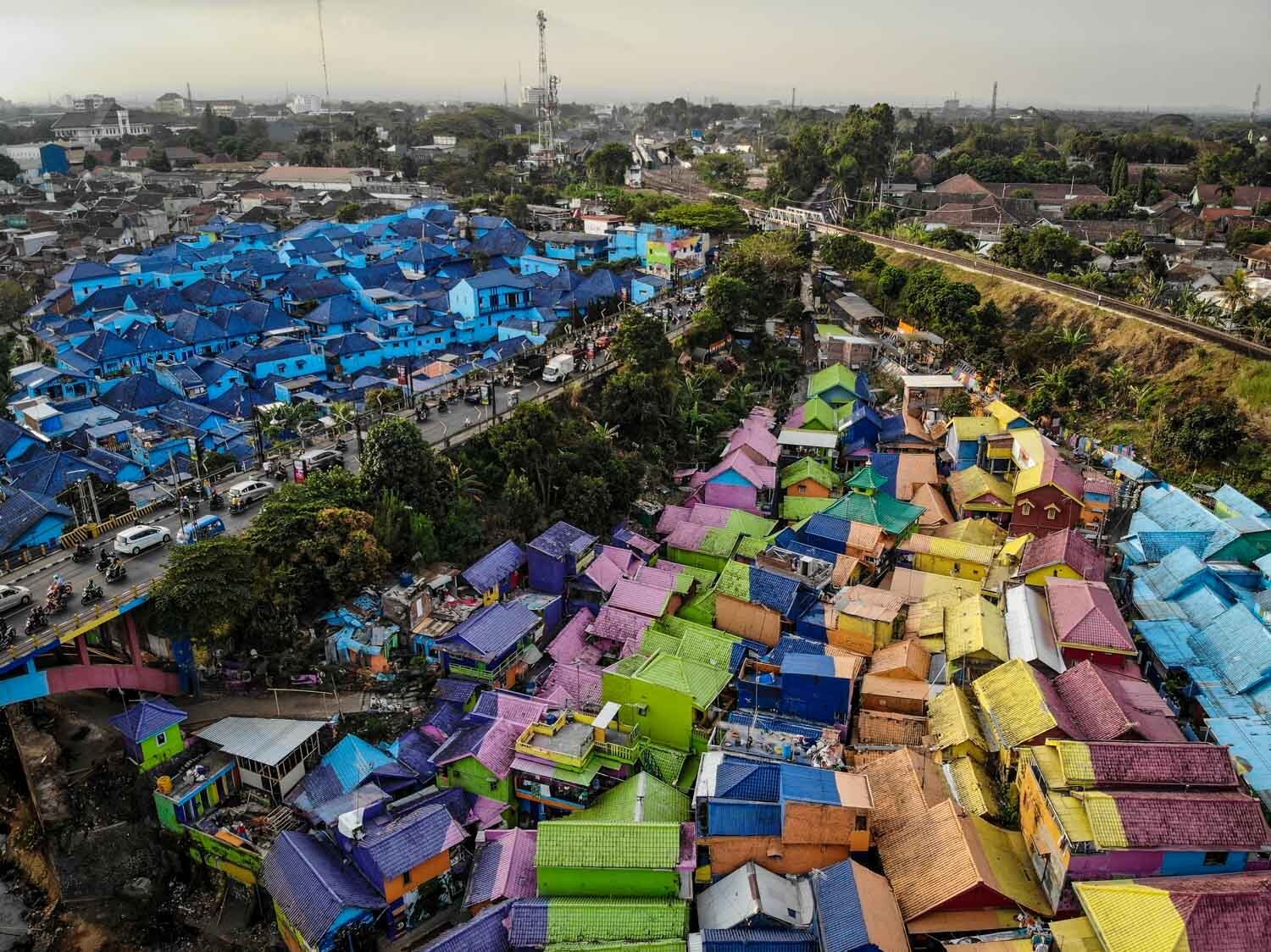
While the main reason tourists stay in Malang is because it makes a good base for adventures outside the city such as Tumpak Sewu Waterfall and Mount Bromo, there is a lesser-known attraction that should definitely be on your radar.
The neighborhood of Kampung Warni Warna was once considered one of the most impoverished slums in the entire country. Residents were on the verge of being kicked out so developers could come in and revive the area until some local university students had a creative idea…
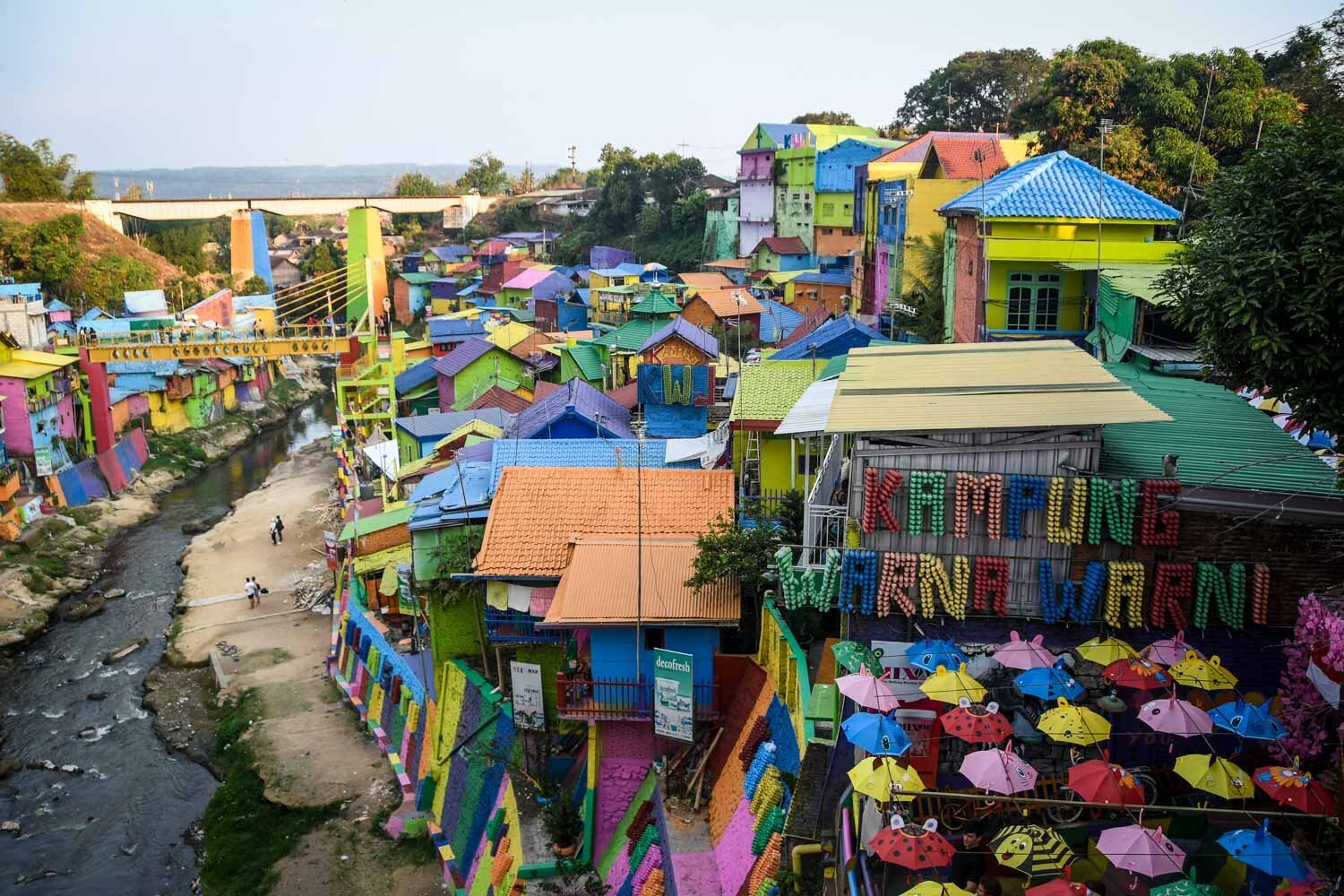
They thought if they could make this neighborhood beautiful through the use of art, they could attract domestic and foreign travelers who would pay a fee to see a “rainbow village”. Their plan worked, and now residents have opportunities to generate income, living conditions have been improved, and dignity has in many ways been restored.
It is a really neat place to explore while in Malang, so read up our guide to visiting Kampung Warni Warna and pack your camera!
8. Sunrise at Mount Bromo
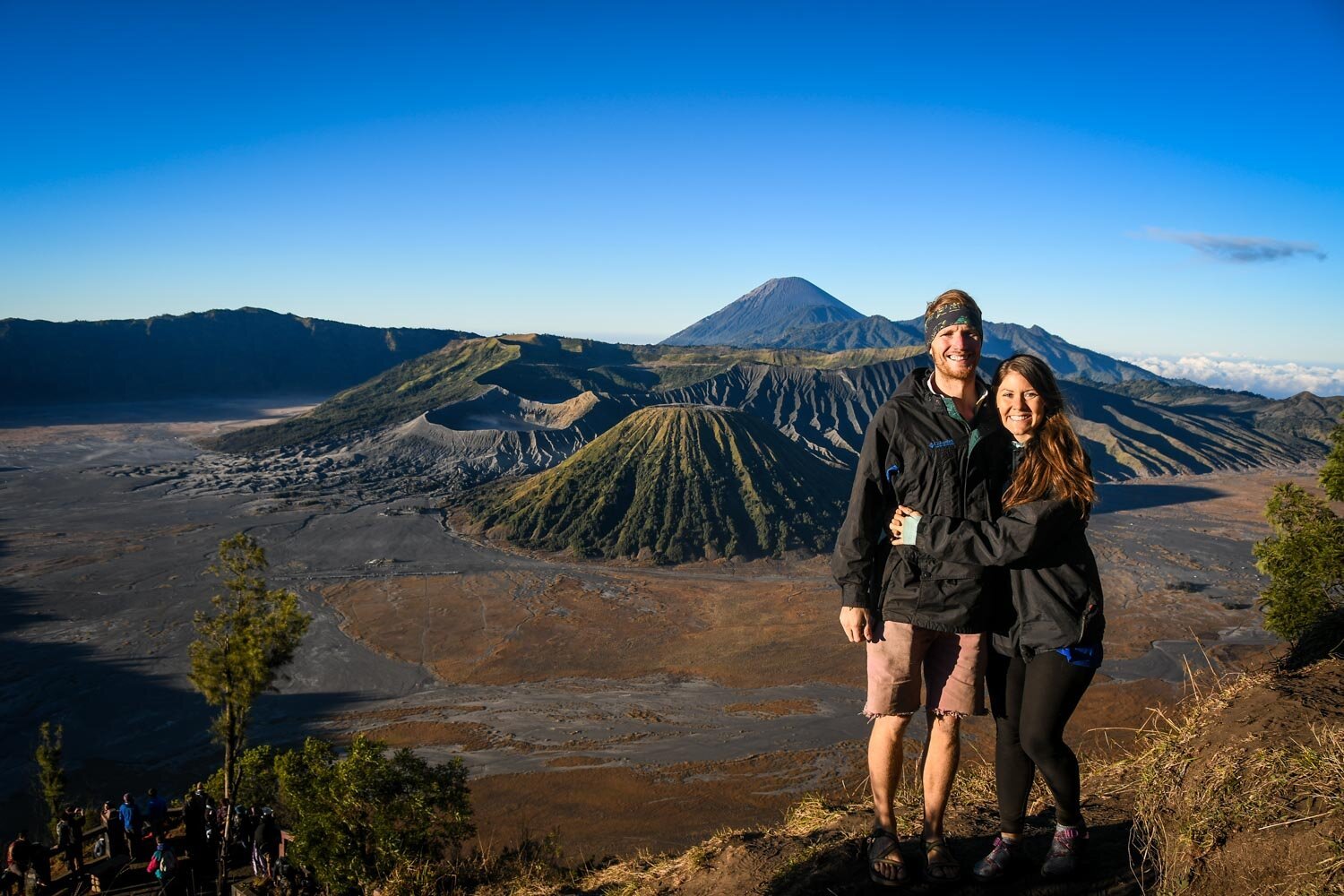
Seeing sunrise over Mount Bromo is on most Java itineraries, and for good reason. It is pretty damn spectacular.
Mount Bromo is an active volcano that looks like something out of a movie. It’s actually pretty much the perfect “cartoon volcano” — the epitome of what we all think volcanos should look like.
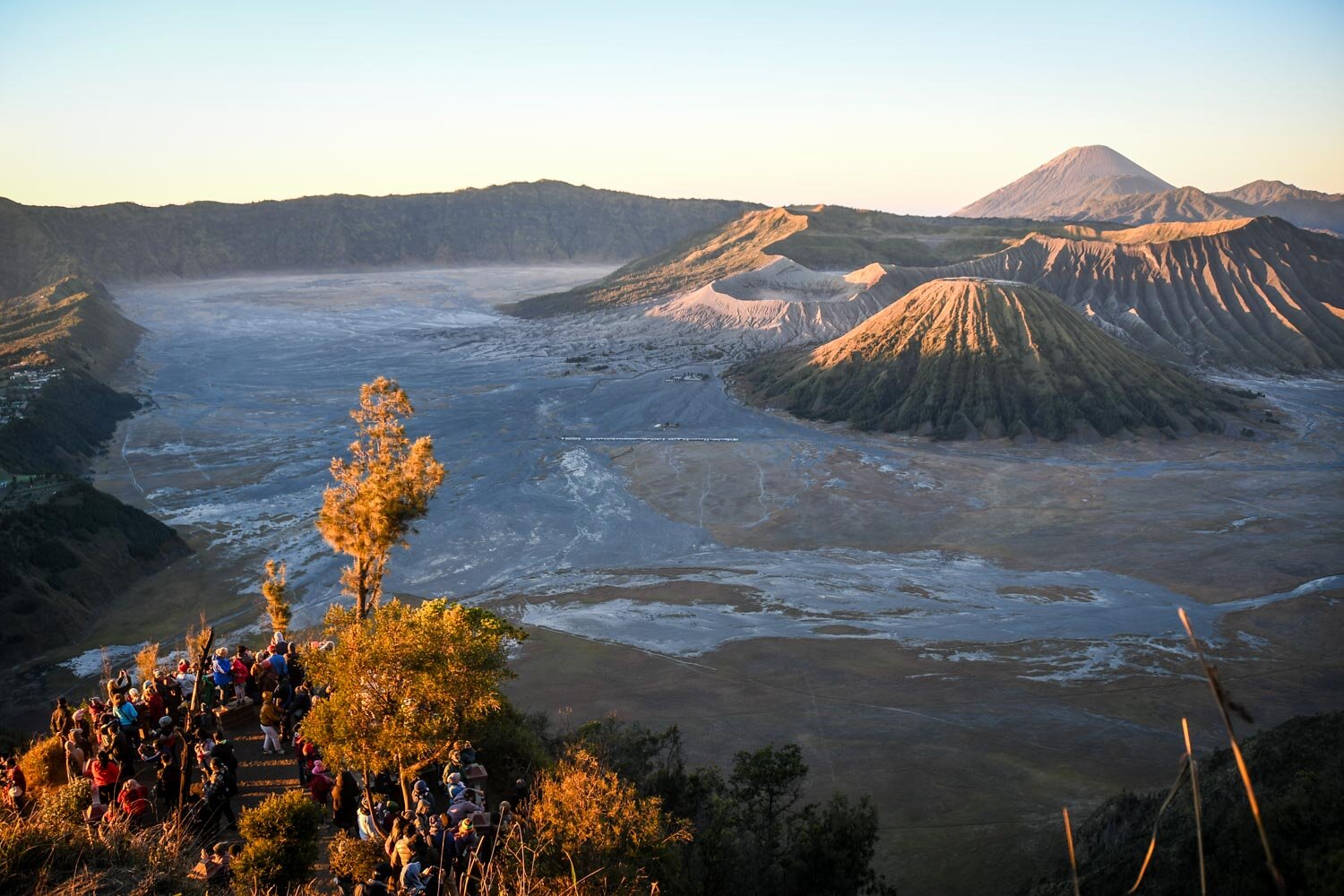
That said, you won’t be enjoying the sunrise in solitude. Along with Ijen Crater (#9 on this list), this is likely the spot where you will find the most tourists — both Indonesian travelers and foreign — during your entire time on the island.
As long as you’re prepared to share this incredible sunrise with many others, we think you’ll really enjoy the experience.
Pssst! Read up on our guide to seeing sunrise at Mount Bromo so you know what to pack and what to expect!
9. See the “Blue Flame” at Ijen Crater
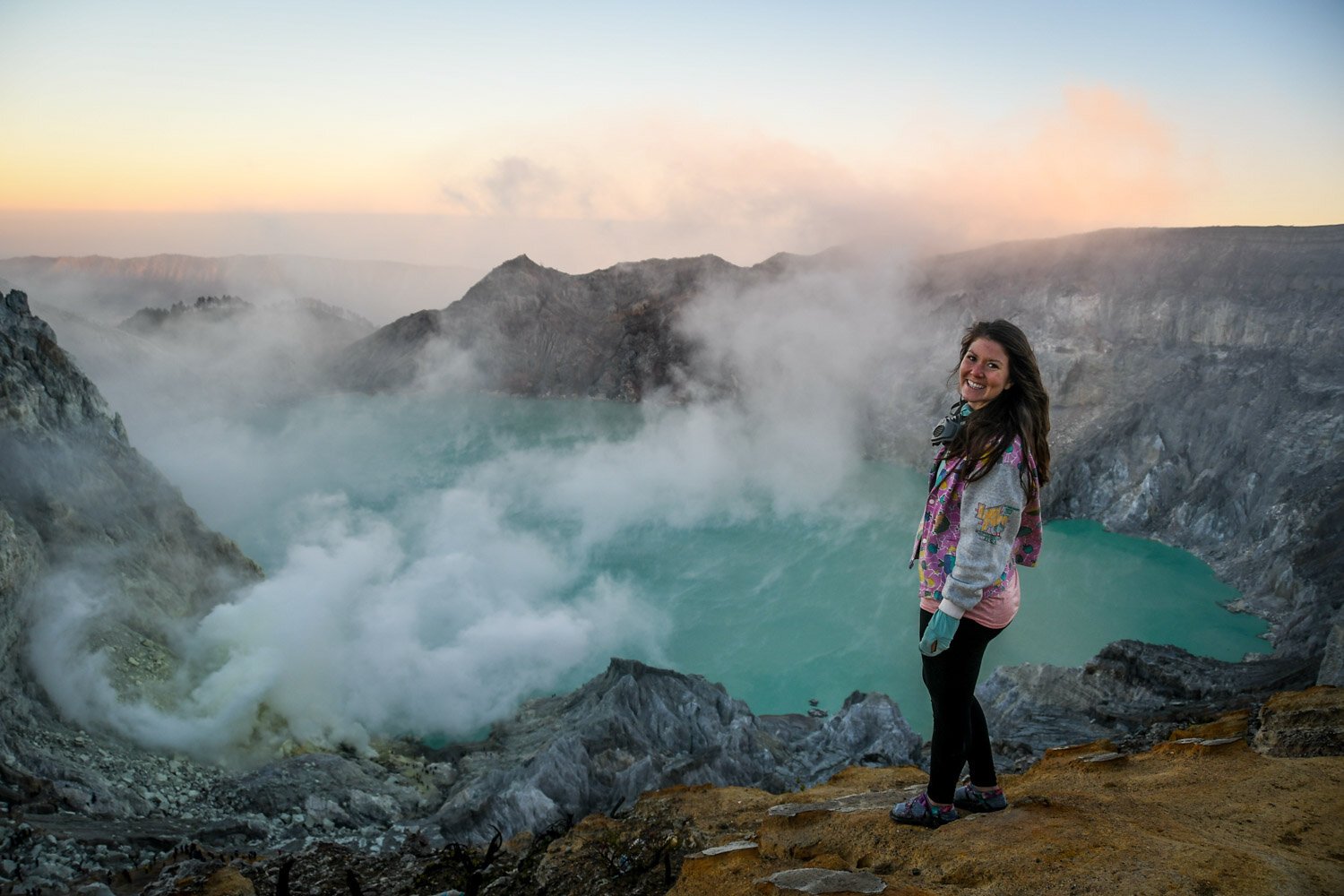
This is another early morning, but my oh my, is it ever worth it! In all our travels, we’ve never been to a place even remotely similar to Ijen, and that’s because this place is truly one of a kind.
To begin with, this is a volcano inside which is a crater lake that water unlike any body of water you’ve ever seen. The milky turquoise color of the water is almost eerie and is indicative of its extremely high acidity levels. In fact, this lake is the largest acidic lake in the world. But that’s not all that makes it unique…
At the edge of the lake, is a concentration of sulfur so dense that there is a working sulfur mine, and as you get near the lake, you’ll see the hard-working miners going about their (literally) back-breaking work.
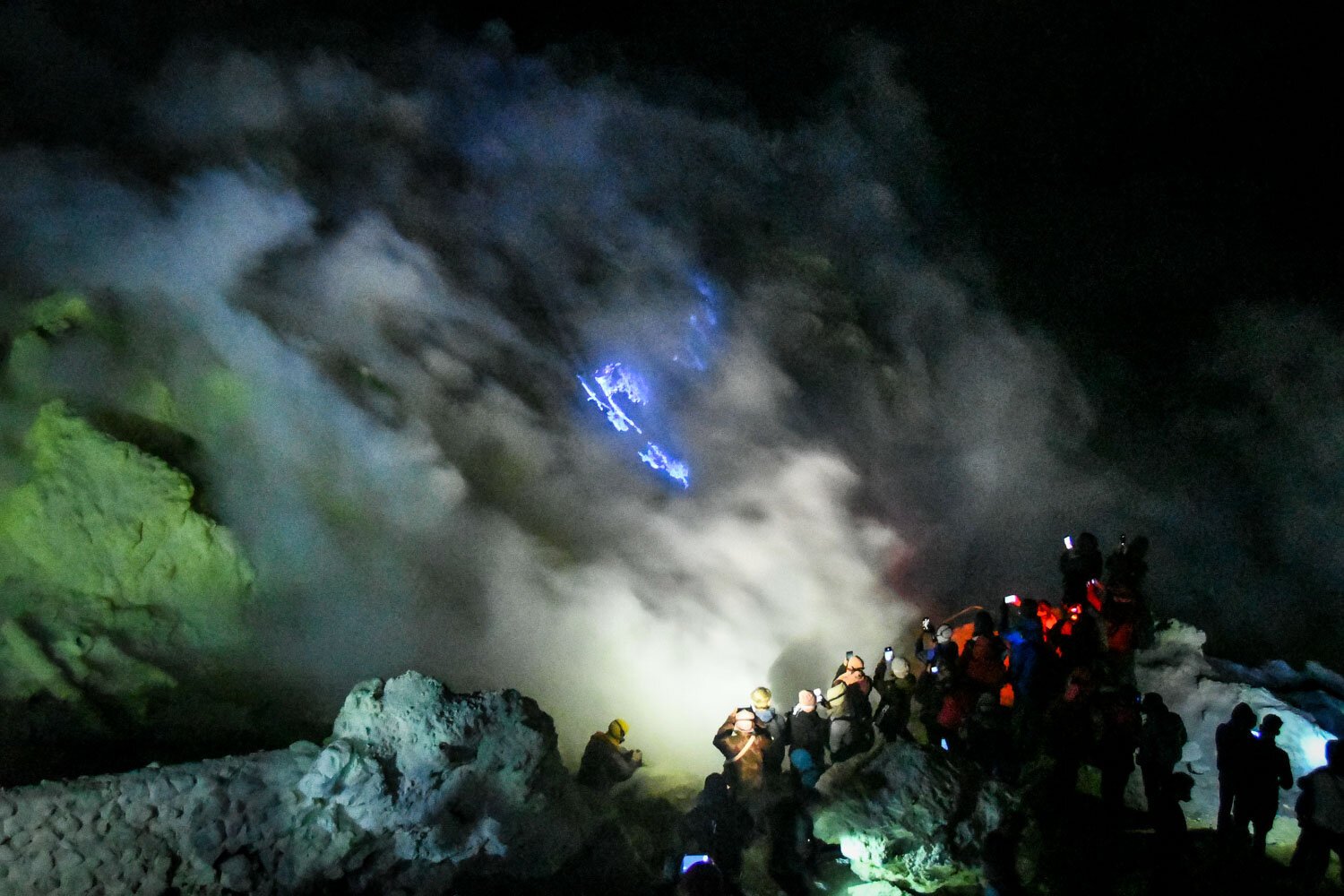
Plus, you’ll also be able to (hopefully) view the illusive Blue Flame, which is a natural phenomenon which can only be viewed at two places on earth: at Ijen Crater and in Iceland.
Keep reading: There’s sooo much more we want to say about Kawah Ijen (kawah means “crater”), so if you’re planning a trip to Java, be sure to check out our complete guide to visiting Ijen Crater, which is packed with insider tips!
Java Travel Guide

Alright, now that you’ve got a killer list of 9 epic things to do in Java, we hope you’re ready to start planning your trip. When we were planning our own trip to Java, we had so many questions that we couldn’t find the answers to online.
So to make sure that doesn’t happen to you, we’ve rounded up all the things we wish we would have known to hopefully help you plan an epic trip of your own!
Java Travel Tips
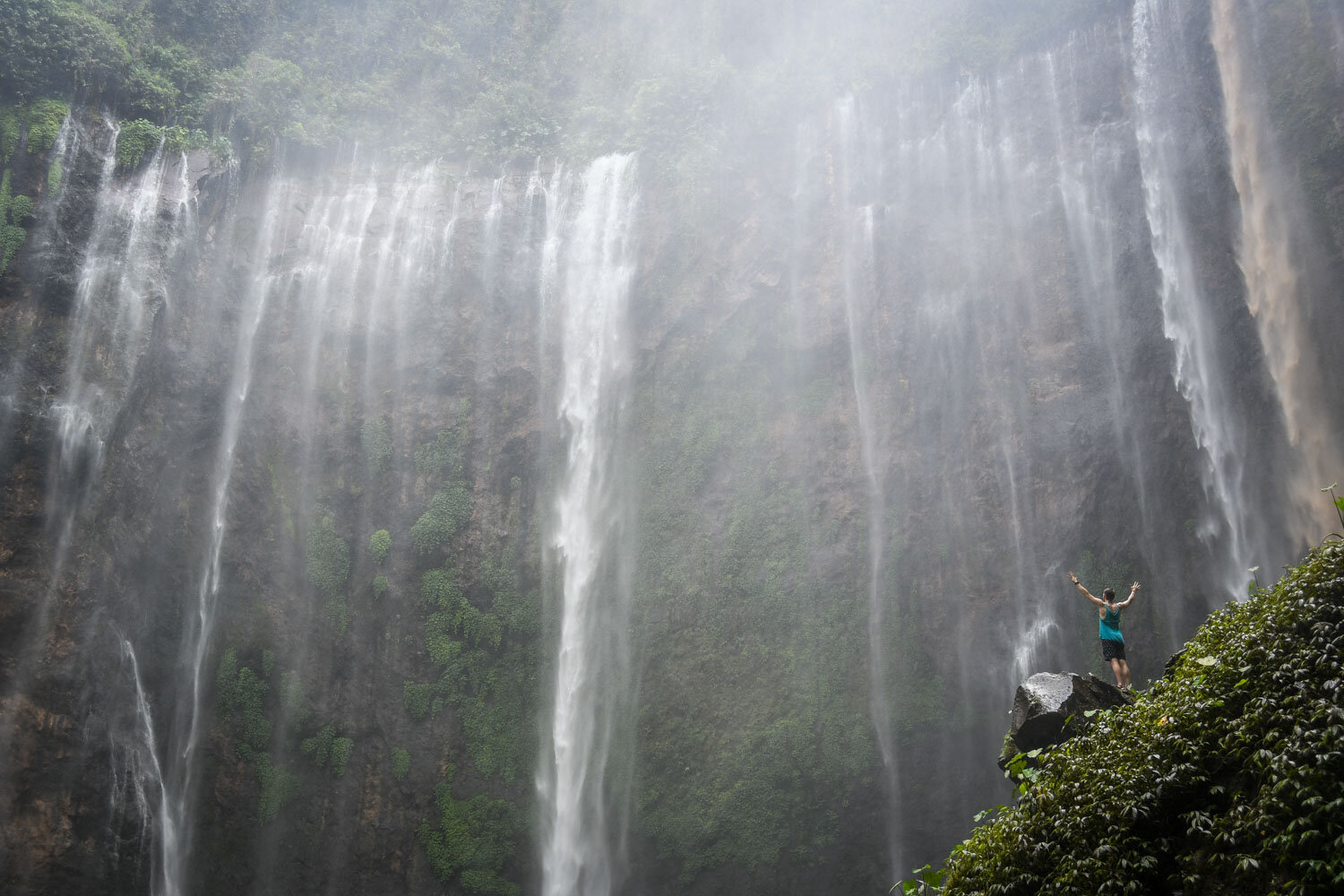
-
Carry your own toilet paper: Many of the toilets around Java are squat style and require a bucket to flush. Also, many do not have toilet paper, so it’s a good idea to pack some in your purse or backpack.
-
Avoid ice: If you have a sensitive stomach, avoid getting ice in your drinks, as it may cause you to get sick.
-
Download Google Maps: We had an Indonesian SIM card (which is really cheap). However, it’s a good idea to download your Google Maps so you can access them when you don’t have good cell signal or Wi-Fi.
-
Dress a little more conservatively: In Bali, you’ll be surrounded by other travelers wearing bikinis and revealing dresses, but the island of Java has far fewer tourists. And in general, the Islamic community is more conservative when it comes to dress. Cover your shoulders and knees as much as possible (at least when you’re going to temples or holy sites).
-
Get local currency: While it’s possible to pay with credit cards at most hotels or upscale restaurants, most local shops will prefer cash. We get the best exchange rates by withdrawing money from ATMs using our Charles Schwab debit card which reimburses all ATM fees!
-
Read more about our favorite travel credit cards here!
-
How to Book Tours in Java
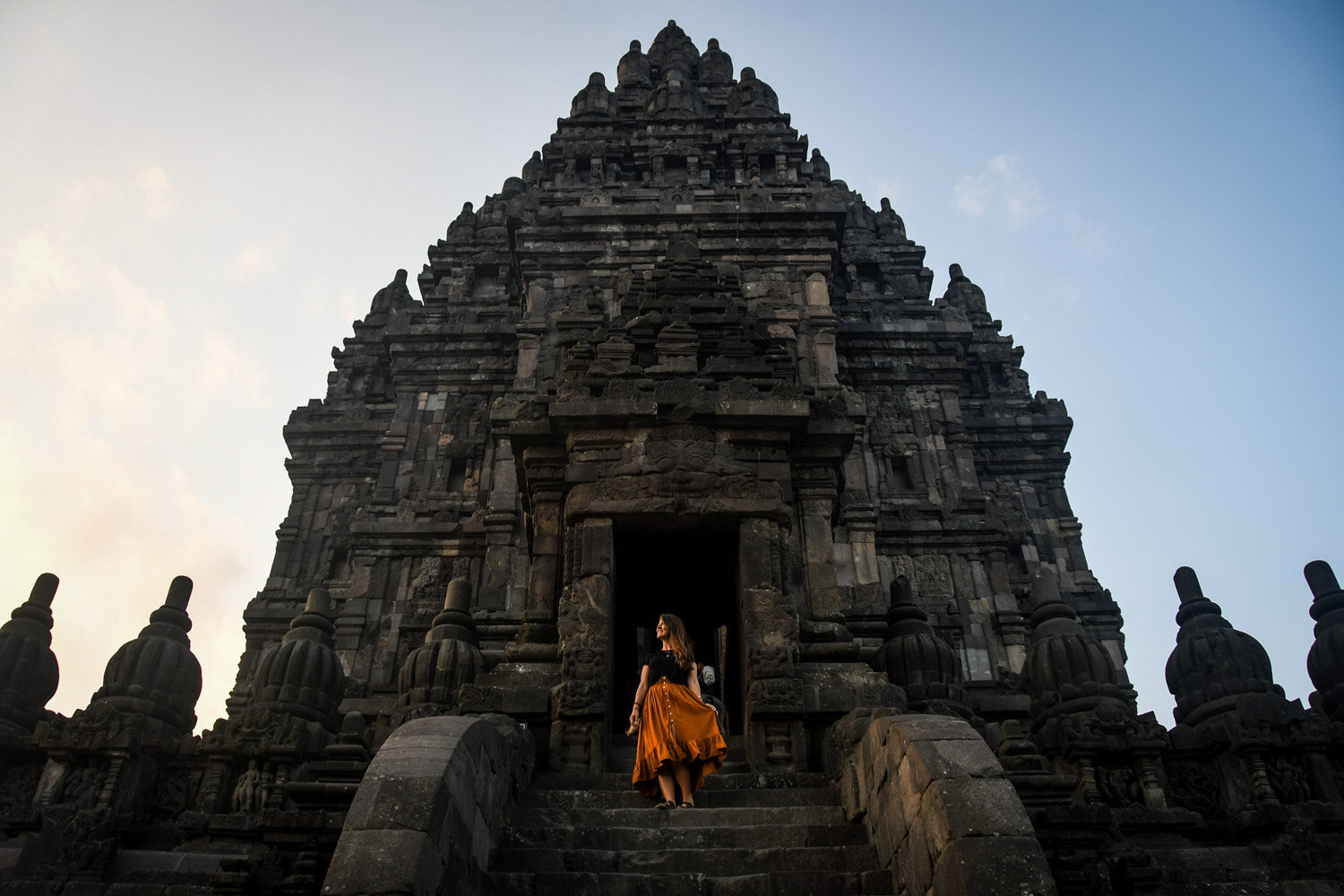
One thing we were a bit nervous about when traveling to Java was how we were going to book our tours. We had a very tight time frame, and the attractions like Ijen Crater, Mount Bromo and the temples in Yogyakarta were the reasons why we were traveling to Java.
There just wasn’t much info about booking tours in Java online. And because we had limited time and didn’t want to miss out on anything, so we messaged out guesthouses in the respective cities ahead of time to try to make a reservation.
In both cases, they told us to wait until we got there which was a bit unsettling, but in our experience we arranged most activities in Java through our guesthouses upon our arrival for the following day.
However, if waiting until the last minute makes you uncomfortable, we are also sharing tour companies through which you can make your bookings ahead of time so you don’t have to book anything during your trip.
-
Yogyakarta Food Tour: Backstreet Academy
-
Jomblang Cave: Backstreet Academy
-
Borobudur & Prambanan Temples: Backstreet Academy
-
Tumpak Sewu Waterfall: Ask your hotel in Malang
-
Mount Bromo: Get Your Guide (multi-day tour including Ijen Crater)
-
Ijen Crater: Get Your Guide (multi-day tour including Mount Bromo)
Good to know: High season in Java is May – November; and for reference, we traveled to Java at the end of July 2019. Read more on what time of year is best to visit Indonesia for a more detailed description of what weather to expect during your trip.
How to Get to Java
If you are coming from Bali, you have two options of getting to Java.
-
Take a short (and typically cheap!), 45-minute flight from Denpasar to Yogyakarta. Alternatively, you can fly into Surabaya, but this would mean you’d miss the cultural wonders of Yogyakarta (which we would highly suggest you don’t skip).
-
Take a shuttle bus to the very western part of Bali where you will then catch a ferry to Banyuwangi. After landing in Java, it is a short, 15-minute ride, and you will land in the town that is the base for visiting Ijen Crater (aka Banyuwangi).
To maximize your time, we’d suggest one of the following routes:
a) West to East: Fly to Yogyakarta, travel east, take a ferry back to Bali. (This is the route we took, and this article reflects that order.)
b) East to West: Ferry to Banyuwangi, travel west to Yogyakarta, fly back to Bali (or your next destination).
Not flying? If you’re trying to lessen your carbon footprint *virtual high five!*, it is possible to take a ferry to and from Java. However, you will need more than one week in order to hit all the spots on this list and circle back to Banyuwangi.
East Java 1-week Itinerary
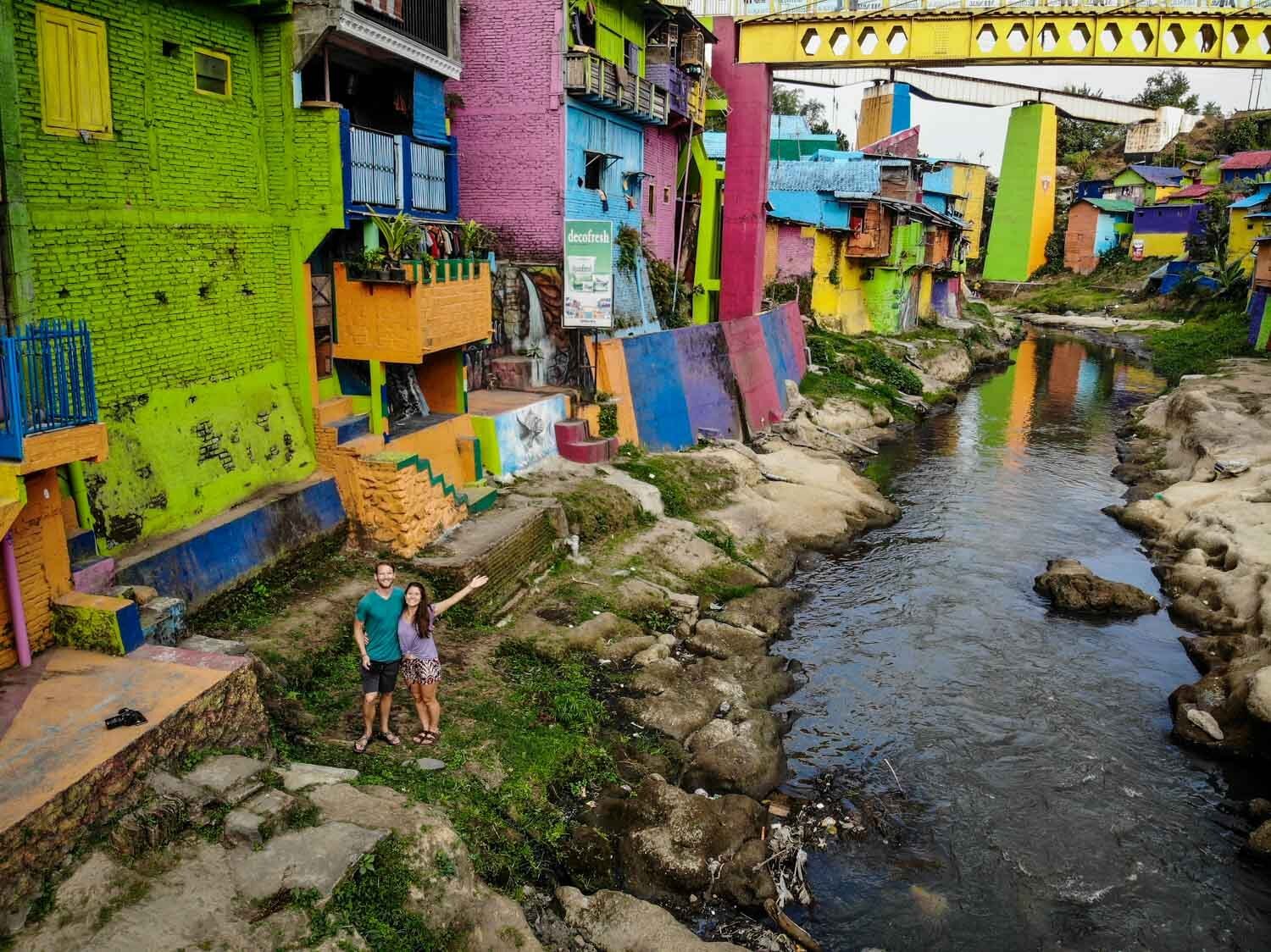
We had 6 days on this island, and absolutely packed it full. We’d recommend 7-8 days to fit all of these activities in, but it can be done with 6 minimum (but it will be very packed!).
-
Yogyakarta: 3 nights (#1 – 4 on this list)
-
Take a night train or night bus from Yogyakarta to Malang
-
Trains leave Yogyakarta daily at 7:45 AM and 20:45 PM. The trip take about 8 hours.
-
Tickets cost around 180,000 IDR ($12 USD) per person
-
Talk to your hotel in booking a train at least one day in advance
-
-
Malang: 2 nights (#5 -7 on this list)
-
Take a evening train from Malang to Banyuwangi
-
3 Trains leave Malang daily at 15:50, 16:05 and 16:32. The trips take about 7 hours
-
Tickets cost around 62,000 IDR ($4 USD) per person
-
Talk to your hotel in booking a train at least one day in advance
-
-
Banyuwangi: 1 night (#8 on this list)
Note: You can flip this itinerary and start in Banyuwangi and go in reverse.
Things to keep in mind…
-
Even distances that look close on a map can take a long time to cover because of the traffic and poor road conditions on this island, so keep that in mind as you plan your itinerary.
-
Also, many of the major attractions in Java require really early wake-up calls (think midnight!), so you’ll need to account for this as you’re planning your trip as well.
-
If you’re traveling from Bali, it’s important to know that Java is in a different time zone. It is 1 hour behind Balinese time.
Yogyakarta Travel Tips
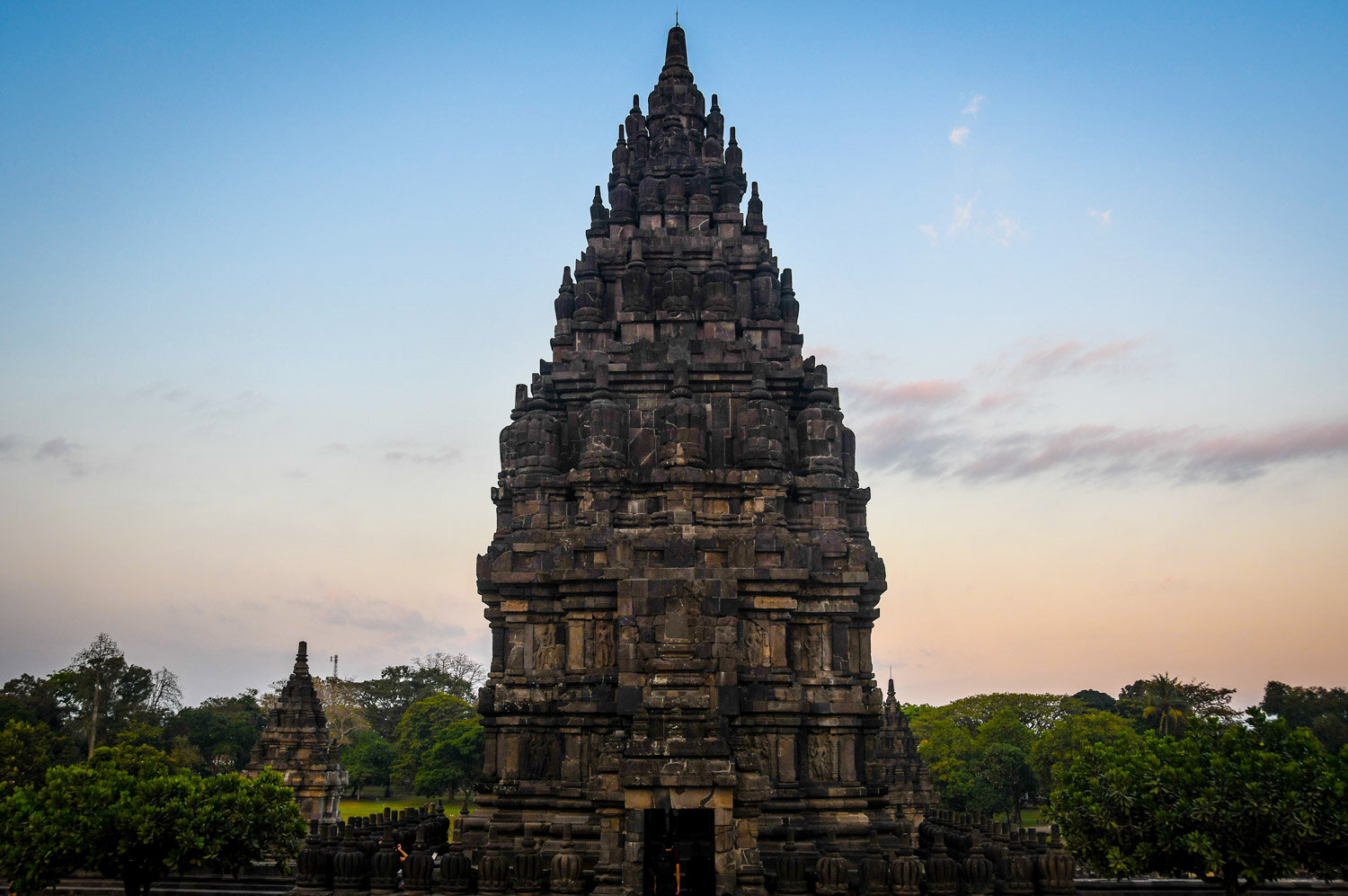
This charming city is full of cultural experiences and some of the best food you’ll try during your time in Java. Yogyakarta also has the best accommodation options out of all the cities you’ll stay in.
Things to do in Yogyakarta
-
Experience Java’s cultural capital by checking out the street art, visiting the Sultan’s palace, and learning about batik. (#1 on this list)
-
Explore the Buddhist temple of Borobudur. (#2 on this list)
-
Visit Prambanan Temple, a Hindu complex that is reminiscent of Angkor Wat. (#3 on this list)
-
Go on a food tour with a local. (#4 on this list)
-
Go caving at Jomblang Cave. (#5 on this list)
Where to stay in Yogyakarta
This city has the best hotel options of all the places on this itinerary, and there are plenty to choose from.
Budget Stays:
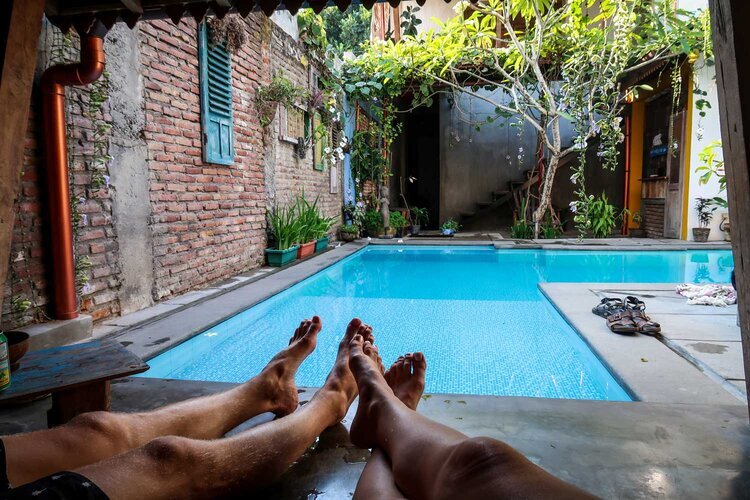

Nextdoor Homestay: We loved our stay at Nextdoor Homestay, which was made especially nice with a small but sunny pool, amazing staff who were super helpful, and a delicious breakfast.
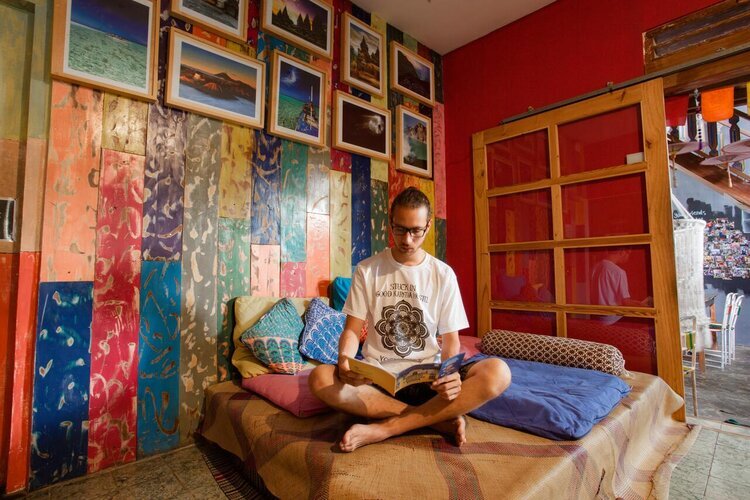

Good Karma Yogyakarta: Centrally located and with excellent reviews, this hostel is a good option for budget travelers. They have private double rooms or 6-person dorm rooms to choose from, a beautiful terrace and a bicycle rental option.
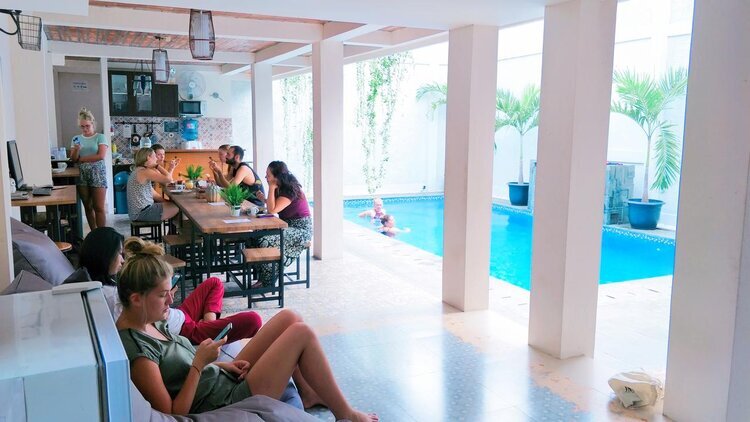

Otu Hostel By Ostic: One of the best features of this adults-only hostel is the outdoor pool area, which is key to surviving the mid-day heat in Java. Start your day with an a la carte or Asian style breakfast and let the 24-hour staff help you plan your excursions.
Mid-Range Stays:
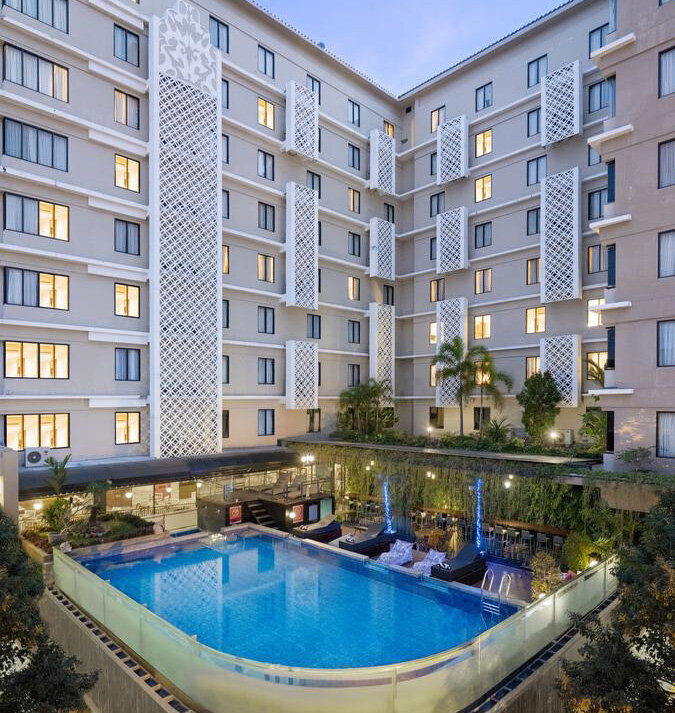

The Alana Hotel & Conference Center Malioboro: This modern hotel in the heart of Yogyakarta is just a 10-minute walk from the historic Sultan’s Palace.The property also features an onsite restaurant serving up Indonesian and Western cuisine, and an outdoor pool.


Hotel Indies Heritage Prawirotaman: Located right on Prawirotaman street, this modern hotel has all the amenities for a comfortable stay in Yogyakarta such an an outdoor pool, air conditioned rooms and an on-site restaurant.
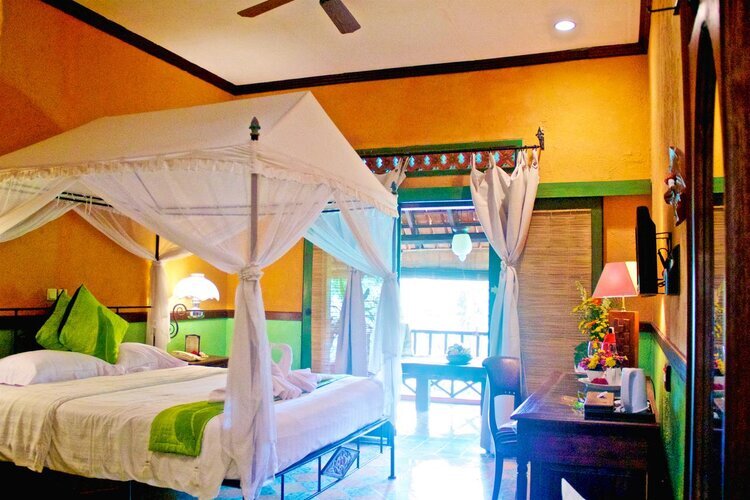

Jogja Village: Right in the heart of Prawirotaman area, this environmentally friendly hotel is decorated with colorful Javanese-style interiors and surrounded by lush gardens. Other features of the property include an outdoor pool and open-air dining area.
Where to eat in Yogyakarta
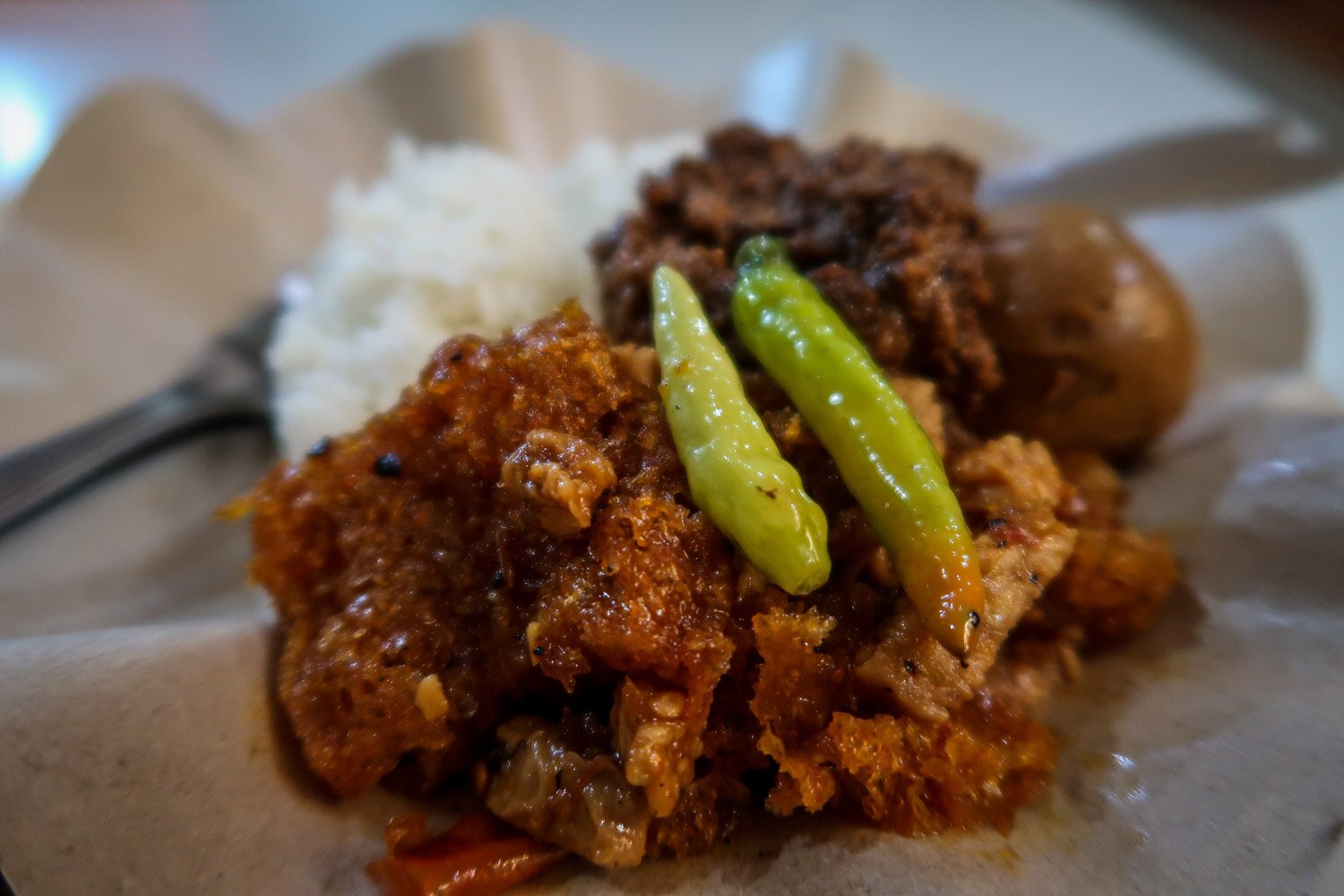

-
Cafe ViaVia: This is a popular backpacker hangout and with a large menu of local and Western dishes including lots of healthy and vegan options, it’s easy to see why. They also have a fair trade gift shop next door and offer cooking classes.
-
Warung Heru: Home-cooked Javanese dishes in a casual atmosphere.
-
Just Playon: Fun bar vibes and a Western-centric menu.
-
Nanamia Pizza: Italian restaurant with a cute backyard patio area for seating.
-
Hungry Nomad Vegan Resto: Great option for those seeking plant-based meals.
-
Sop Merah: Local hot spot for Javanese style soups.
-
ARKADIA: An “Instagrammable” cafe with cocktails, coffee and Western dishes. Sometimes there are art exhibits here too.
Keep Reading: Our Yogyakarta guide goes over many more accommodation options. In that article you’ll also find some of the best places to eat in Yogyakarta (important stuff!) and lots more things to do.
Malang Travel Tips
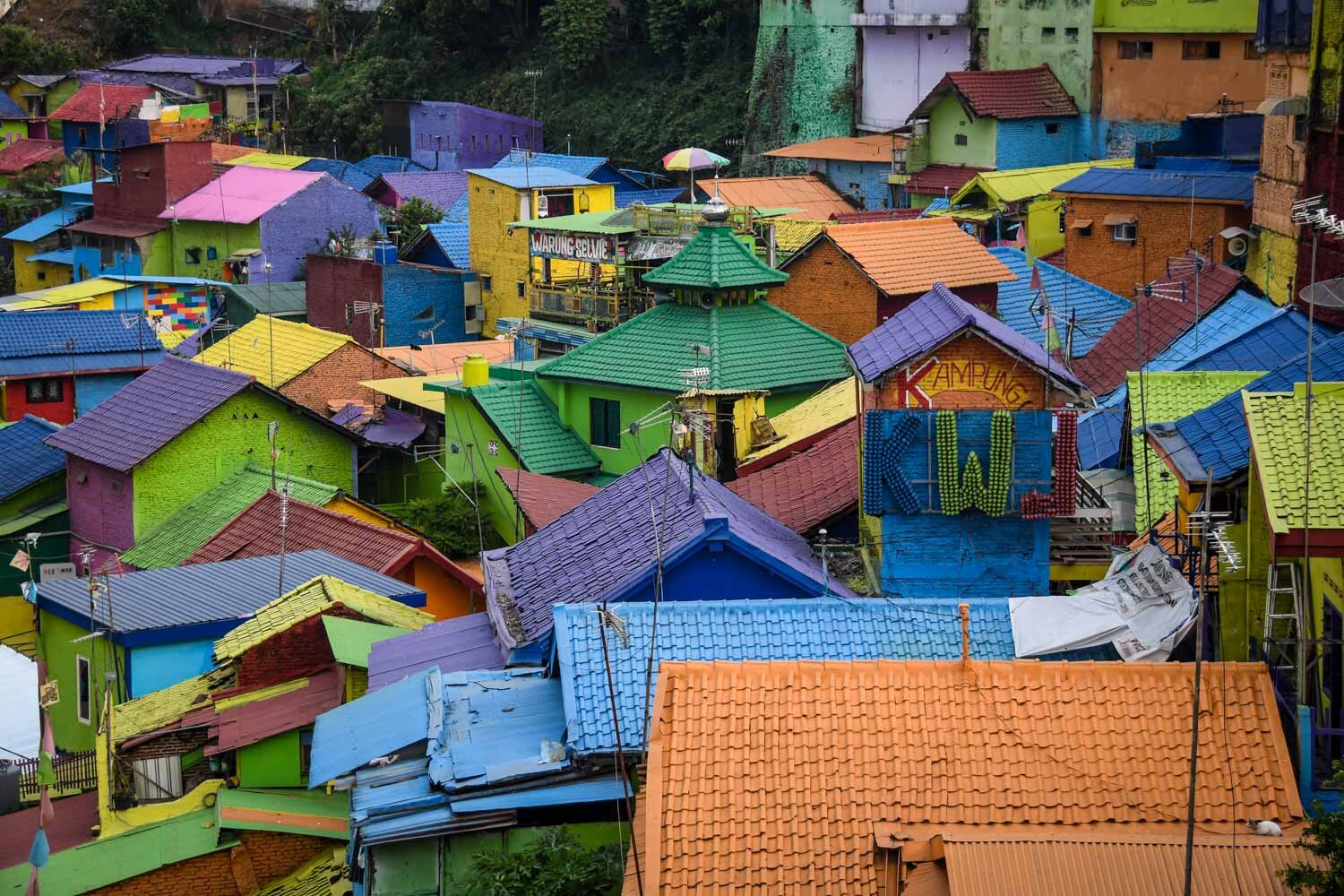

The city of Malang itself isn’t all that interesting. The main reasons to stay here are that it makes a good base for lots of activities outside the city, like Mount Bromo and Tumpak Sewu. You can also visit the “rainbow village” of Kampung Warni Warna while you’re in Malang.
Alternative: Another city that is close to many of the same attractions is Problingo. After doing some research, we landed on Malang because while still pretty basic, there were better hotel options and we wanted to see Kampung Warni Warna, which we would have missed had we stayed in Problingo.
Things to do in Malang
-
Take a day trip to Tumpak Sewu Waterfall. (#6 on this list)
-
Wander around the rainbow village of Kampung Warni Warna. (#7 on this list)
-
See sunrise at Mount Bromo on a “Jeep tour”. (#8 on this list)
Where to stay in Malang
Quite honestly, you won’t have all that many great choices for accommodation in Malang. And you won’t be spending all that much time in your hotel anyway, since most of the things to do are day trips outside the city.
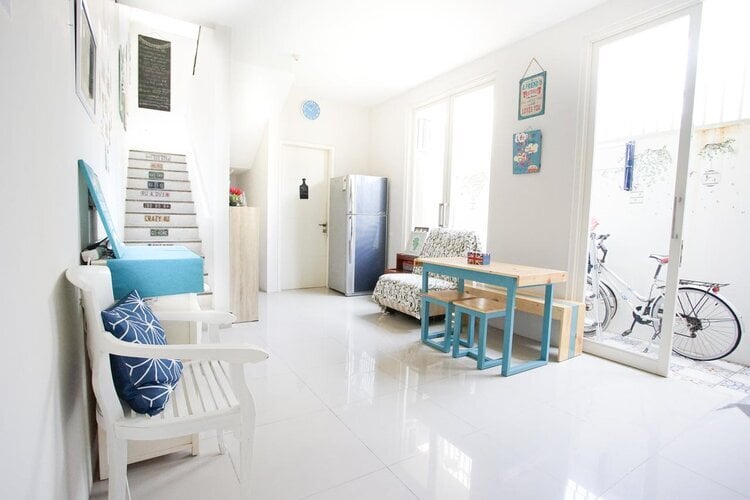



INNI Homestay: We did a lot of hunting for a guesthouse, and landed on INNI Homestay. We could not recommend it more highly. It feels more like a homestay than a hotel, and the mother-daughter duo who run this place make you feel like family. They arranged all of our activities for us and made our super tight schedule come together!
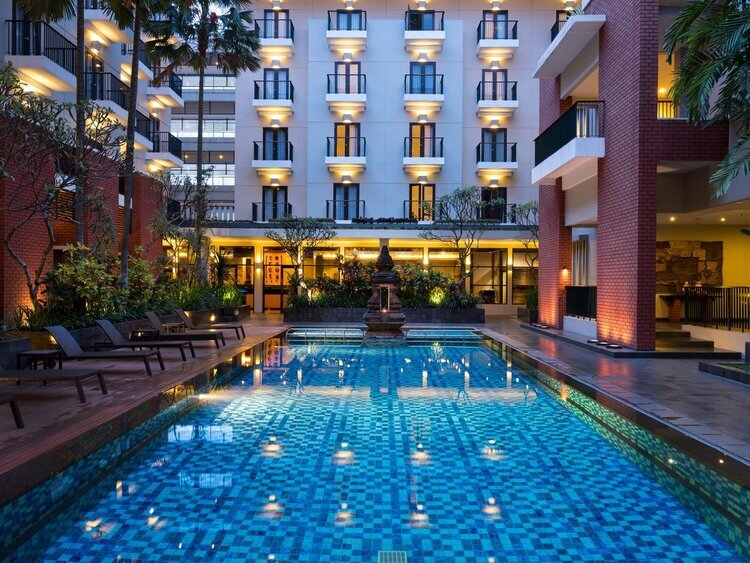

Hotel Santika Premiere Malang: If you want a more traditional accommodation, this 4-star hotel has a great location with a outdoor pool. Each room had air-conditioning and breakfast is included.
Where to eat in Malang
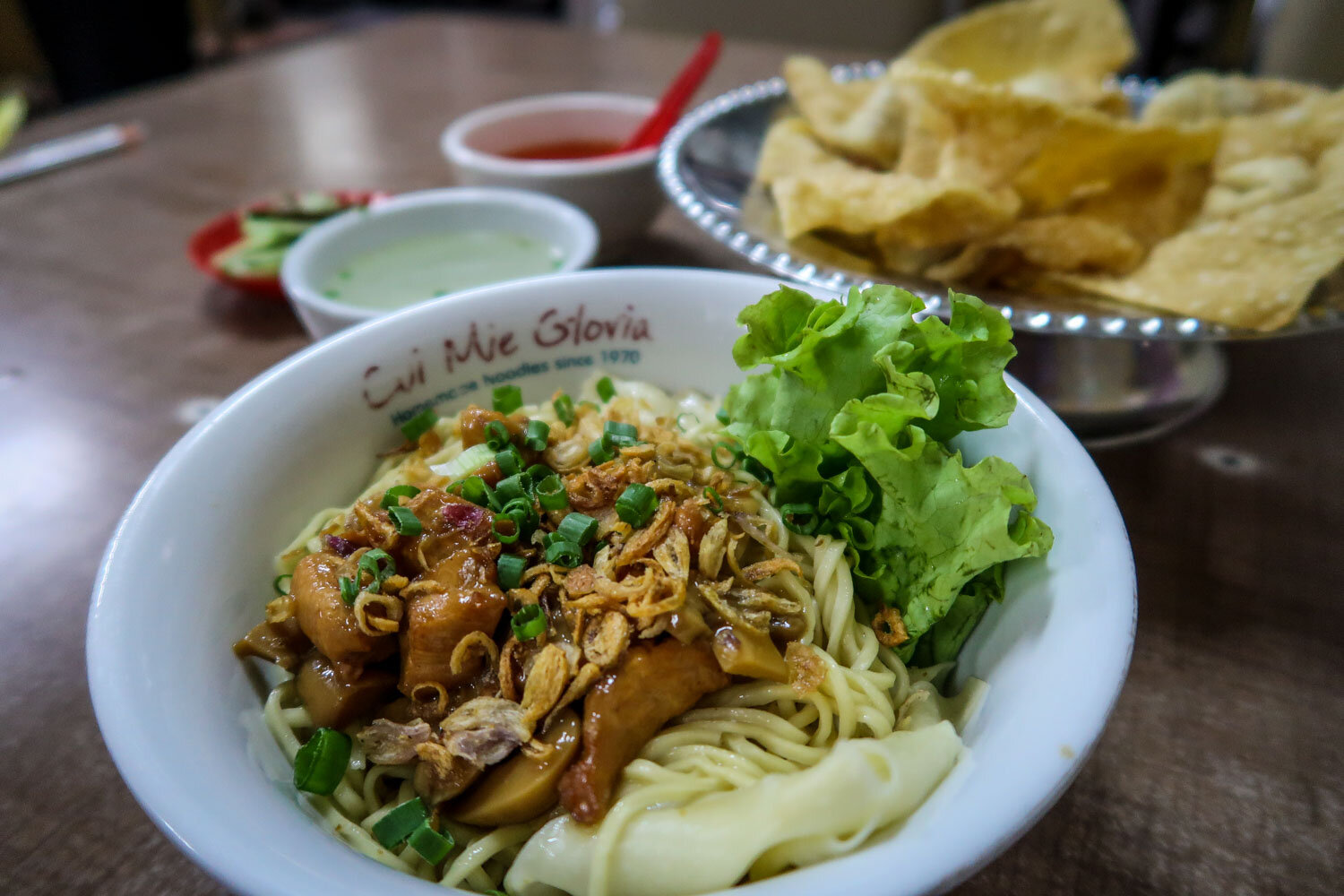

-
Gloria’s Noodles: A friend recommended this place to us, and it sure delivered. The atmosphere isn’t anything too special, but the noodle soups (with their famous homemade noodles) are excellent.
-
Taman Indi Resto: For an upscale meal in Malang, it’s hard to beat Taman Indi, which was also very conveniently located near our homestay. We absolutely spoiled ourselves with fancy (non-alcoholic) drinks, an appetizer, and entrees, and spent just over $18 USD in total. So even though it’s an upscale experience, it is still very affordable.
-
Night Market: around 6:30-ish the night market starts to open and you’ll find lots of different options for cheap street food.
Banyuwangi Travel Tips
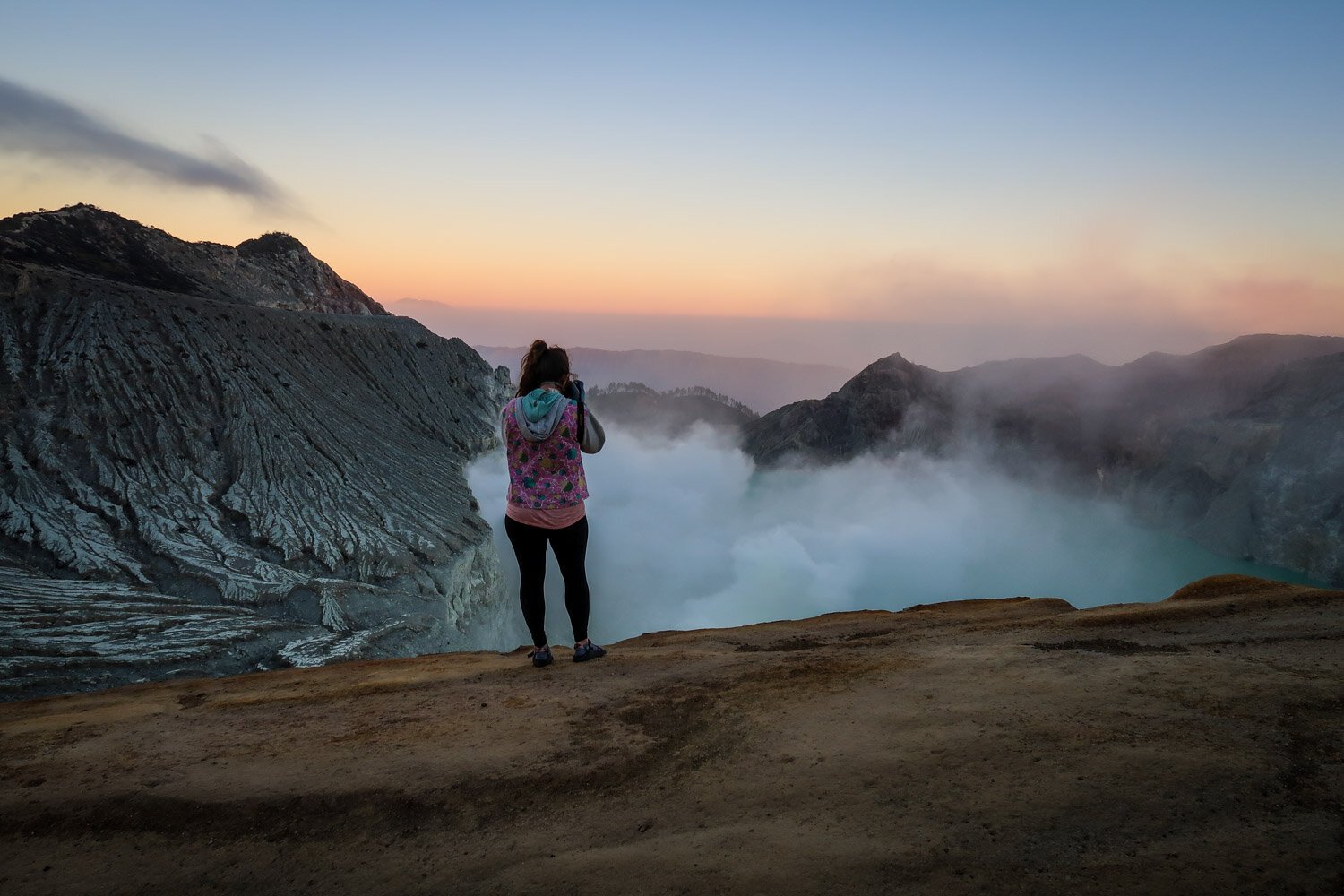

Things to do in Banyuwangi
-
Hike to Ijen Crater for sunrise (#9 on this list).
-
Relax at a hotel pool.
-
Take a day trip to the stunning beaches on Tabuhan Island and Menjangan Island.
Where to stay in Banyuwangi
Budget Stays:
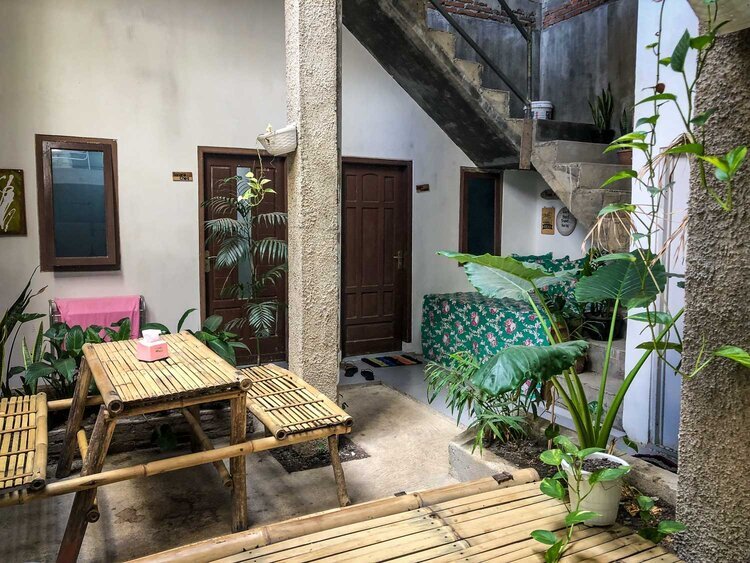



Banana Homestay: We stayed at Banana Homestay and felt incredibly welcomed by the husband and wife who run this place. We were very hungry when we arrived late at night, and they even drove us on motorbike to their favorite noodle shop. They also let us borrow warm jackets for our Ijen Crater hike. Seriously kind people. The accommodation itself is basic, and there is no hot water in the shower, but it was just fine for our short stay.
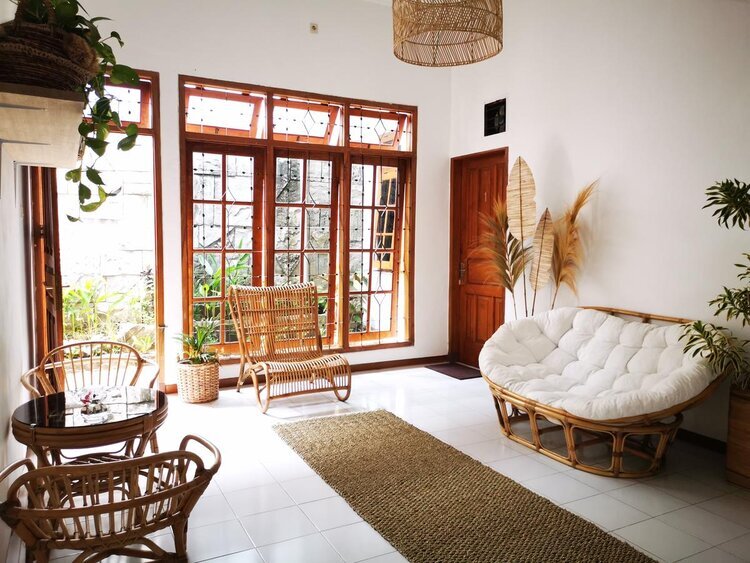



Snooze Hostel: This place is brand new, and had it been open during our visit we probably would have chosen to stay here. With a beautiful design, many room options, and rave reviews, this looks like a good choice for many types of travelers.
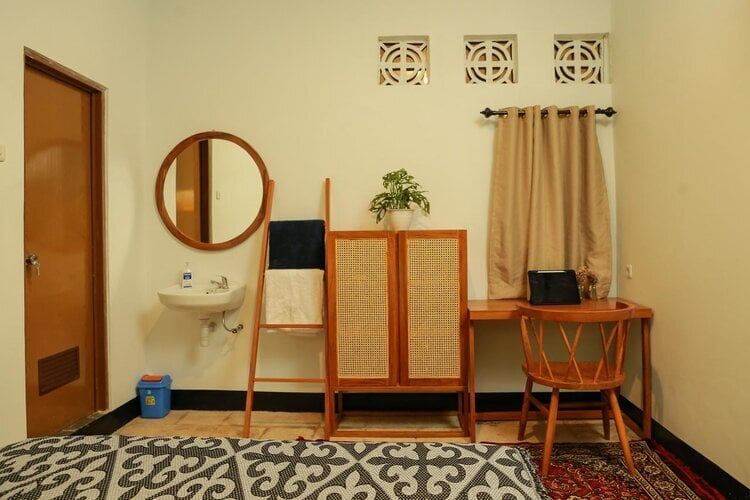



Terima Kai Guest House: This is another guesthouse that has opened since our stay, and it looks really comfortable, nicely designed and affordable.
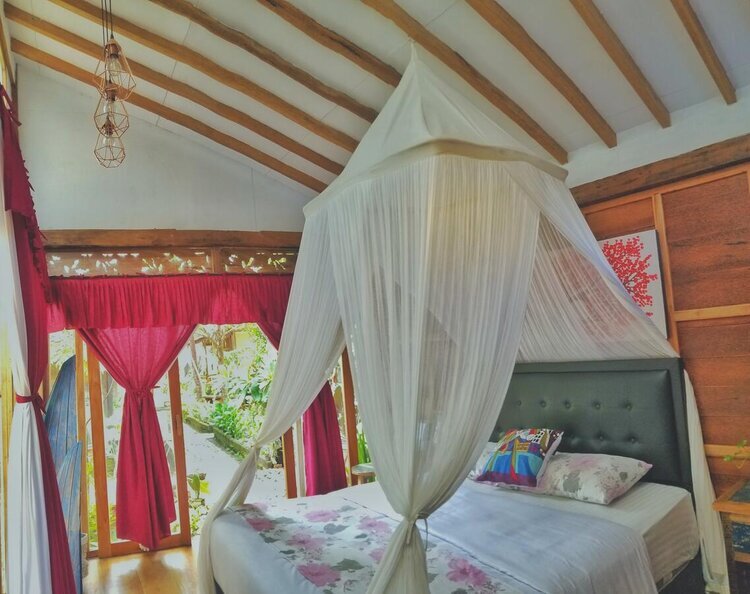



Didu’s Homestay Bed & Breakfast: This popular spot books up fast and is known for great hospitality, a nice breakfast, and boho bungalow vibes!
Mid-Range Stays:
If you have a bit more of a budget to work with and are looking for a hotel with a pool, we’ve got a few options for you!
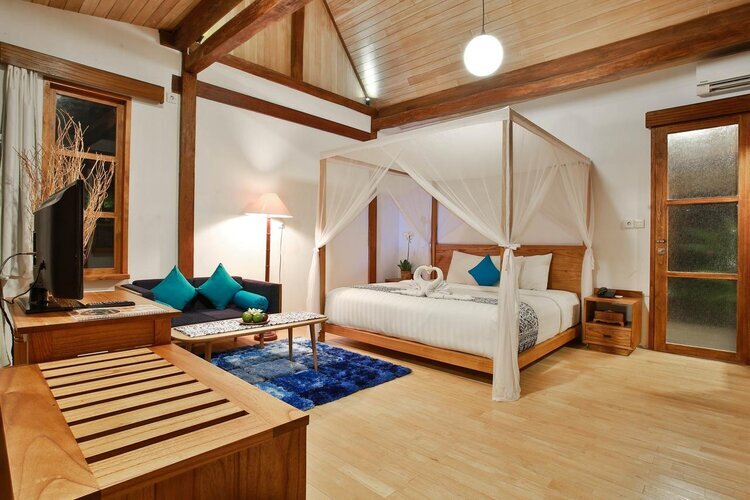



Villa Solong: If you’re looking to splurge (and by splurge, we’re still looking at under $100, but it is still significantly more expensive than most accommodation in the city), Villa Solong would be our pick.
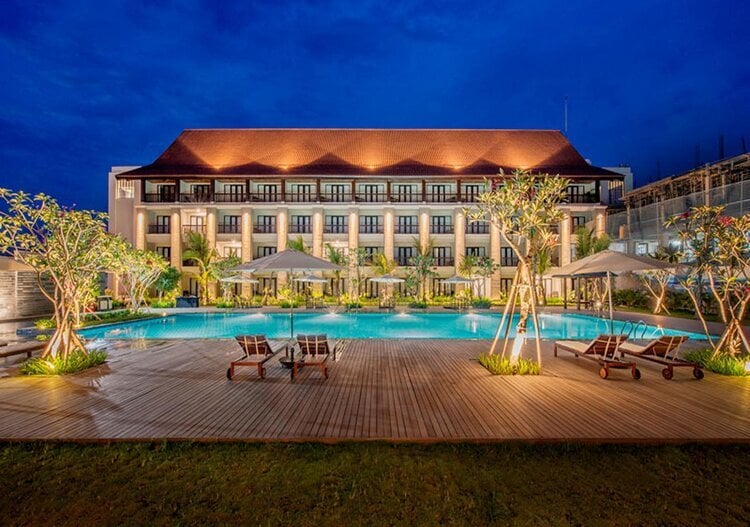



El Hotel Royale: This large resort-type accommodation has a pool and massive dining area. For the reasonable rates, it looks like a good choice for those seeking a larger hotel on their stay.
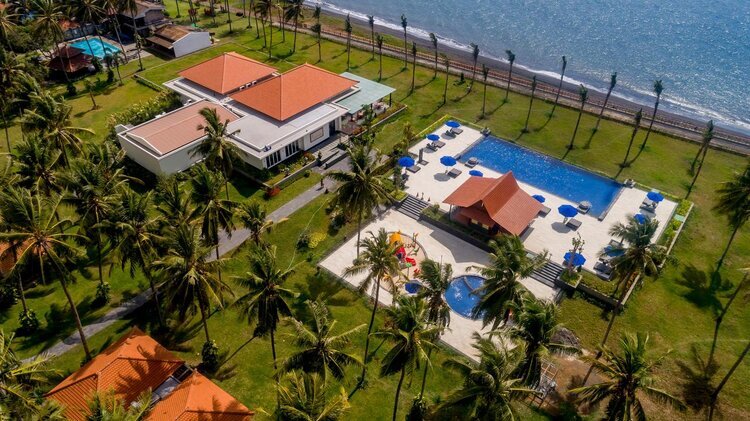



Ketapang Indah Hotel: Beachside hotel with a pool and affordable rates. Some rooms appear to be quite nice while the less expensive rooms look pretty basic.
Transportation in Java
There are a few different ways to get around in Java. Being the largest island in Indonesia, there is a pretty good rail system that connects major cities (like all of the ones above). However, the train departure times are not always the ideal, but hey, this is Java and it’s more about the adventure.
Java Train tips:
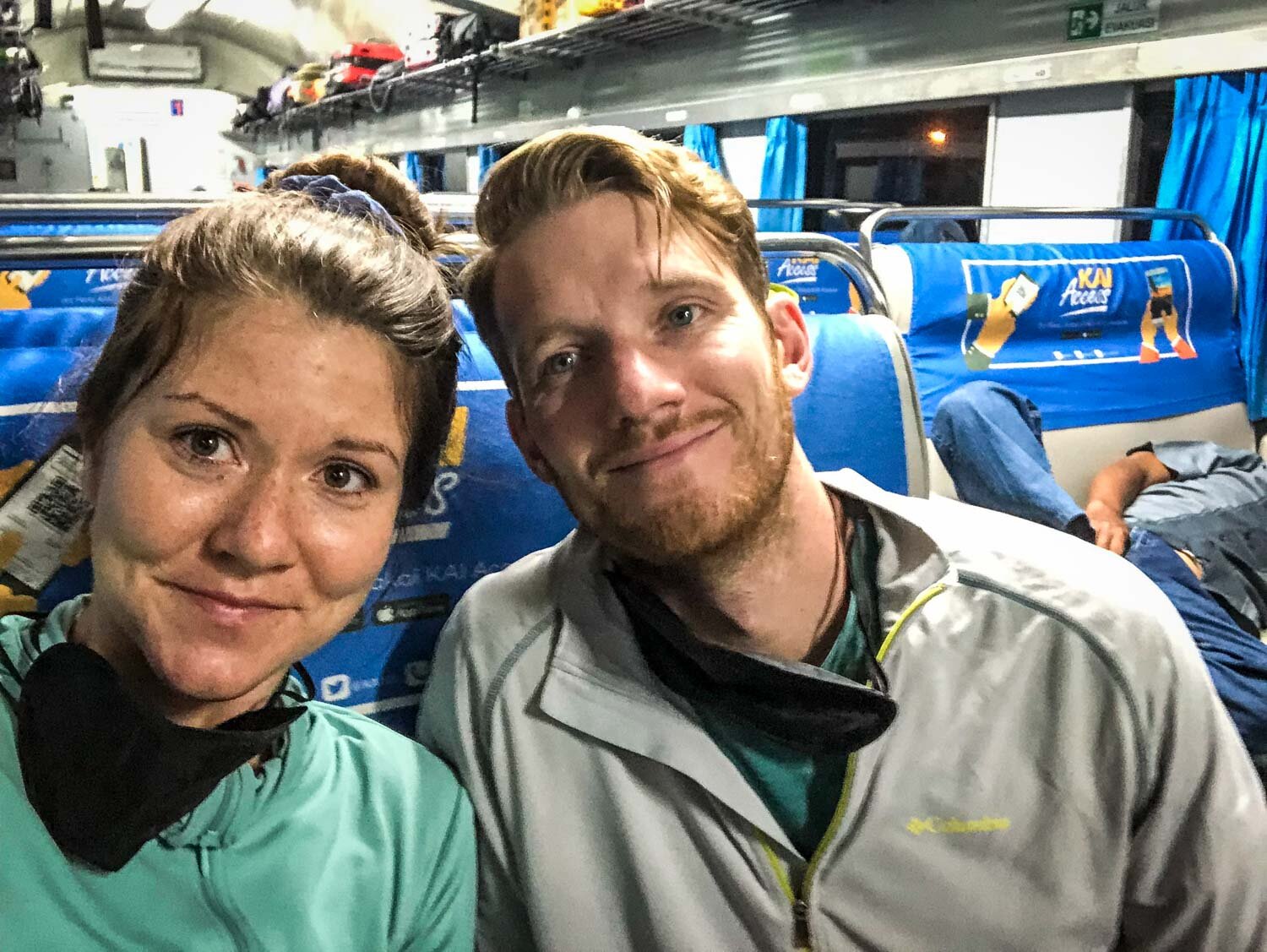

-
There are three train classes you can book: Economy, Business, and Executive class:
-
Economy: thin padded bench seats that face each other
-
Business: padded bench seats that all face the same direction with slight recline, power outlets, air conditioning
-
Executive: similar to airplane coach seats with legroom, seats recline, power outlets and lots of air conditioning.
-
-
For the long train rides, we would recommend getting Executive class seats because you’ll be much more comfortable and it’s really not that more expensive. We booked late and had Business class for 8 hours overnight from Jogja to Malang and it was not the best night’s sleep.
-
Lights are always on, even overnight
-
There are racks above your seat where you can put your luggage.
-
East Java is fairly safe to travel, but you can never be too careful. That’s why we typically lock our bags to the rack with wire combo locks.
-
-
Purchase your tickets online at Tiket.com (you can have your hotel staff help you get the right trains)
-
Note: Prices will vary depending on the time you depart.
-
-
Once your train is booked online, you’ll need go to a kiosk at the station to print off your paper boarding pass. Be sure to have your booking number ready to enter or scan.
Getting around within cities in Java
Take a taxi
If you arrive in Java without cell service, your best bet is to take an airport taxi into town. There are stands near the exit where you will tell them your destination and pay in exchange for a ticket. You will be assigned to a taxi and you will hand your ticket to the driver. Once you’ve made it to town, we’d suggest other ways of getting around as they will be cheaper.
Grab or Go-Jek
If you have cell service, skip the taxi booths and instead book a ride through Grab or Go-Jek (ride-sharing apps in Indonesia). Both apps are great, however, we noticed slightly cheaper rates on Grab. Rideshare apps are also just a good way to get around town.
Take a becak (cycle rickshaw)
This is another way to get around town and is a more unique experience!
Rent a motorbike
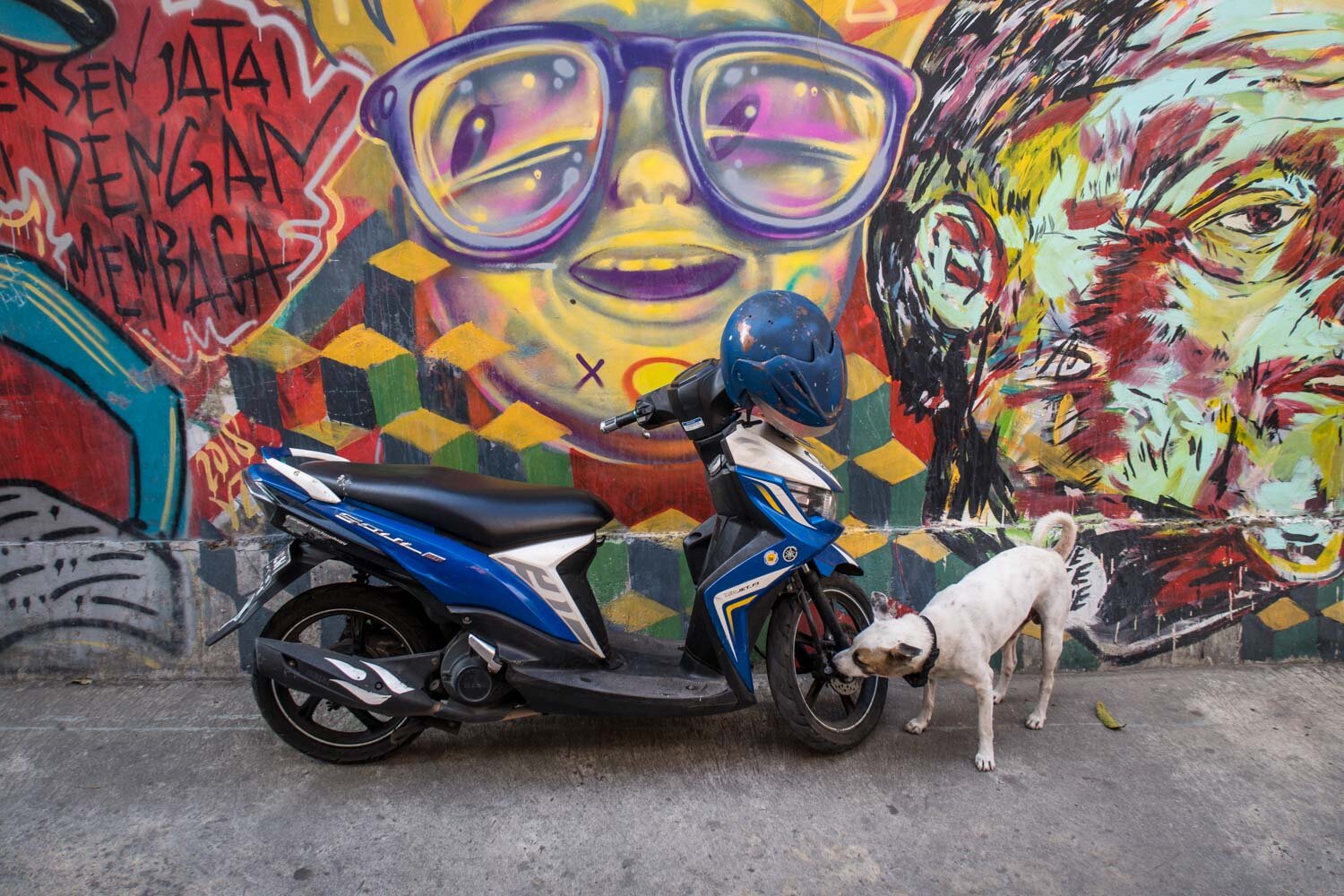

Before we even start with this one, we would only recommend renting a motorbike in Java if you have experience driving a scooter. Java isn’t a bad place for driving a motorbike, but it’s not the best place to learn. But if you are confident, it is really nice to be able to drive yourself to Borobudur and Prambanan Temples and explore the small villages outside of the city.
-
Safety advice: Always, always wear a helmet. We see way too many travelers going without them and it makes us cringe. We know of far too many people who have gotten seriously injured on motorbikes in Asia, so why would you risk it?! Also, look into your travel insurance policy to see whether or not you’d be covered in the case of an accident.
Hire a driver
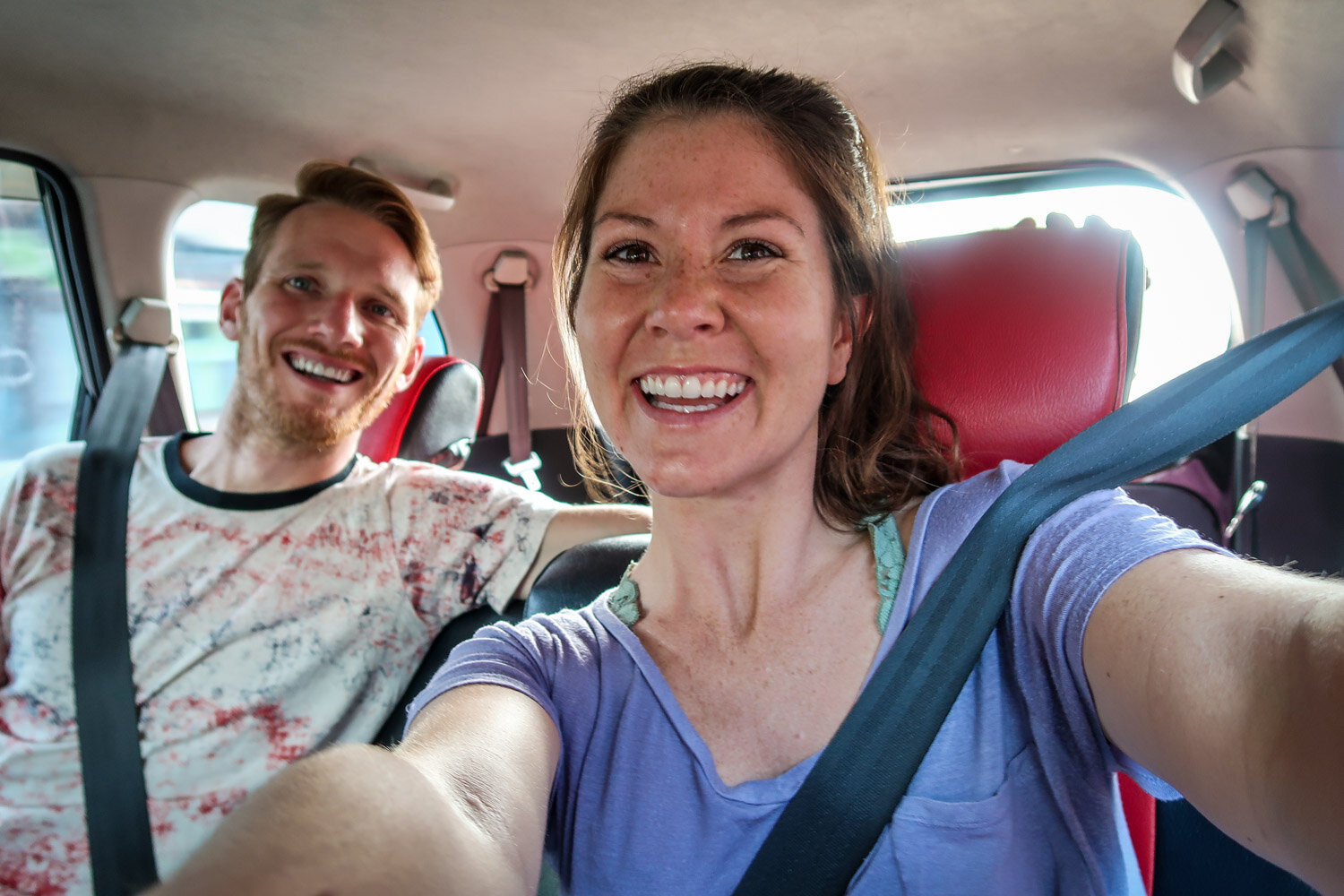

When trying to get to the sites outside of the city (the temples, etc.), the best way to get around if you’re not comfortable driving yourself is to hire a driver. It is actually a very affordable service and they can bring you to several places throughout the day, maximizing your time. You can arrange a driver through most hotels or guesthouses in Java.
What to Pack for Java
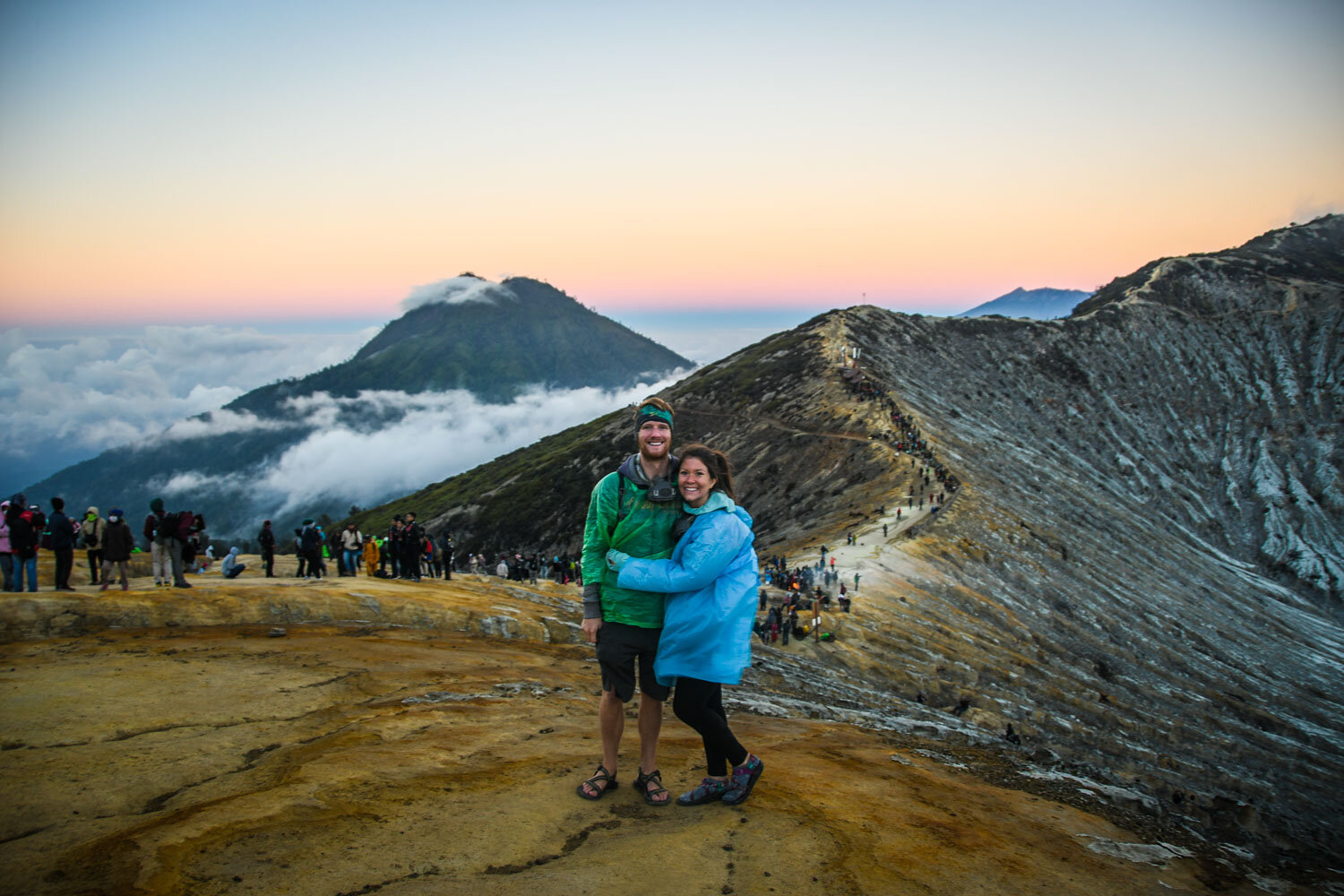

Traveling in Java is a different story than lounging around Bali, and it requires a pretty different packing list. That bikini-and-kimono combo just won’t cut it in Java.
Read our suggested items below so help you prepare for your trip:
-
Warm clothing for early morning hikes: Jacket, Gloves, Hat. It gets seriously cold up there. We were pretty unprepared for our trip to Java. We had been living in Bali for the 3 months prior to our trip and really didn’t have any warm clothing. We were so lucky our guesthouse owners let us borrow clothing because damn it was COLD. (And we’re from Minnesota, where we’re used to freezing temperatures!)
-
Shoes that are suitable for hiking
-
Lightweight clothes that are on the more conservative side. This is a Muslim country, remember, and it’s important that you cover your shoulders and knees when entering temples or holy spaces. But it’s also worth mentioning that it can get very hot during the day, so you’ll want to be sure you pack outfits that will be comfortable in the heat.
-
Healthy snacks. If you’re coming from Bali, grab some granola, trail mix, or other healthy snacks to munch on during your long drives and early morning hikes. Outside of fresh fruit, we found it more difficult to find healthy snacks.
-
Book or Kindle for long transportation
-
Reusables: We put together a packing list of our favorite eco-friendly items that we always carry on us to reduce the amount of waste we create on our travels. Java, in our experience, has a pretty big issue with single-use plastics, so packing these items will help you say no to unnecessary waste.
You may also like…
We have TONS more resources on Java, so if you’re planning an Indonesia trip, you’ll definitely want to check out our other articles too!
-
Tumpak Sewu Waterfall: Essential Guide to Java’s Best Waterfall
-
Visit Malang’s Colorful Rainbow Village: Kampung Warna Warni Jodipan
Save this article on Pinterest for later!
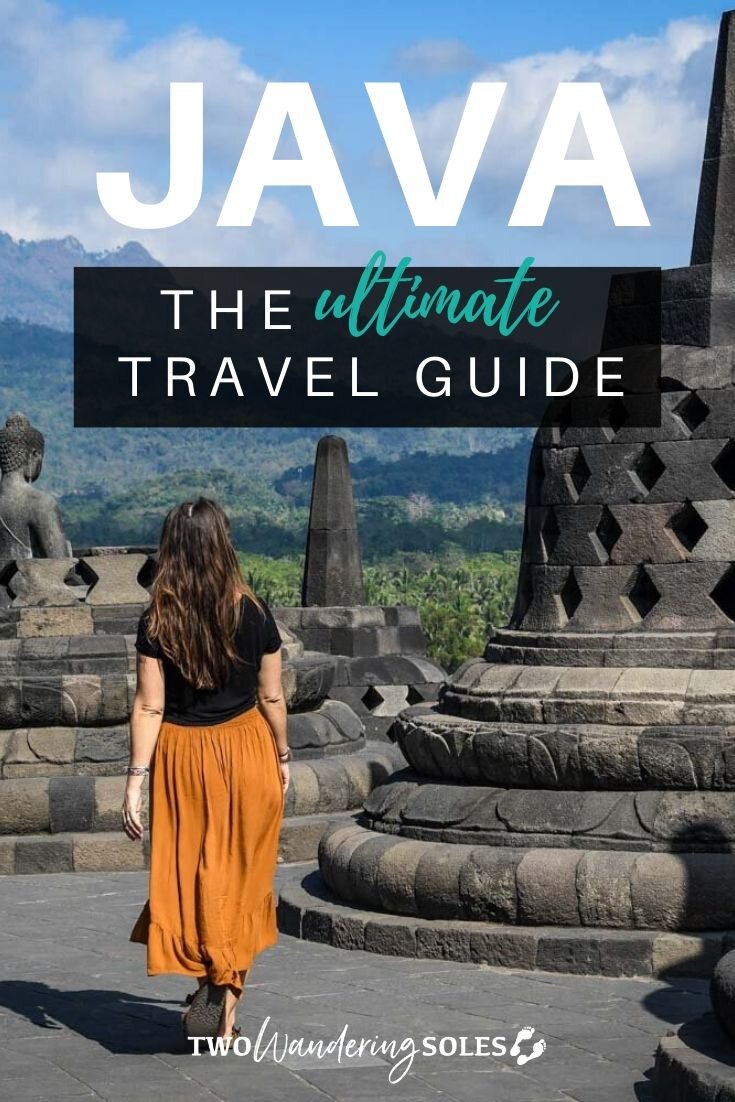



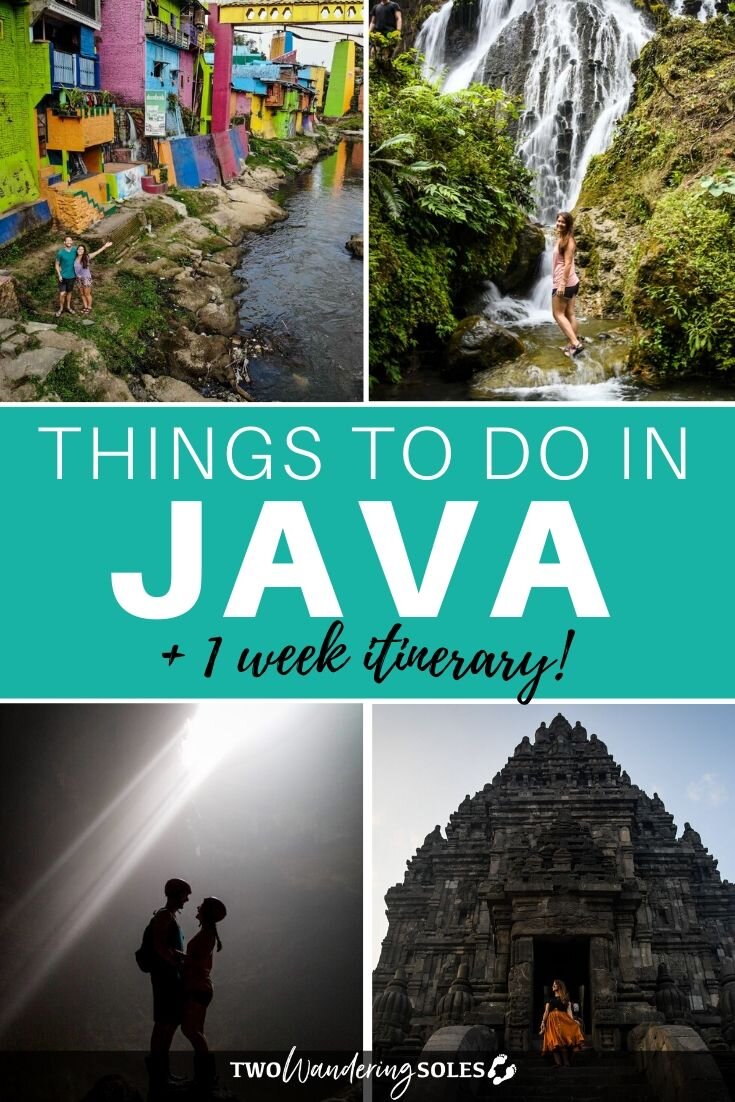



We want to hear from you!
Is Java on your radar? What questions do you still have? What things to do in Java do you want to see? Comment below and we’ll do our best to answer!

Thank you so much for all of this incredible information. Much appreciated.
Thanks for this detailed article about Java ! As a javanese myself, I highly appreciated it ! There are so many hidden gems on this island that most tourists overlook 🙂
I am planning to take a train from Yogyakarta to Banyuwangi in a few weeks. I was curious if there is food or snacks on the train? Thanks!
I’m so glad I found this post and you guys. My fiance and I are going on a month long adventure in Indonesia for our honeymoon and want to ride across Java on a motorbike. (He drives a vespa exclusively in LA so he has experience!)… We will definitely be using this post as our guide. Thanks!! And happy adventuring!
What an incredible post on cool things to do in Indonesia beyond Bali! I had no idea that there were volcanos in Java honestly, definitely makes me want to visit soon. Saving for later!
SO many volcanoes! Wed love to go back and see even more of the (massive) island!
This sounds like my kind of place! That rainbow village seriously looks so cool. Really hoping I’ll still be able to go there sometime this year, I’ll definitely be saving this post for when I do ?
The "rainbow village" was amazing! I hope you’re able to visit someday!
Thanks so much for shedding light on other parts of Indonesia other than Bali! While all are beautiful, it’s refreshing to see 🙂 I love your photos as well!
Thank you so much, Alexandra! We feel like we’ve only just scratched the surface of Indonesia. It is such a beautiful country with a vibrant culture and friendly people and we can’t wait to get back and see more!